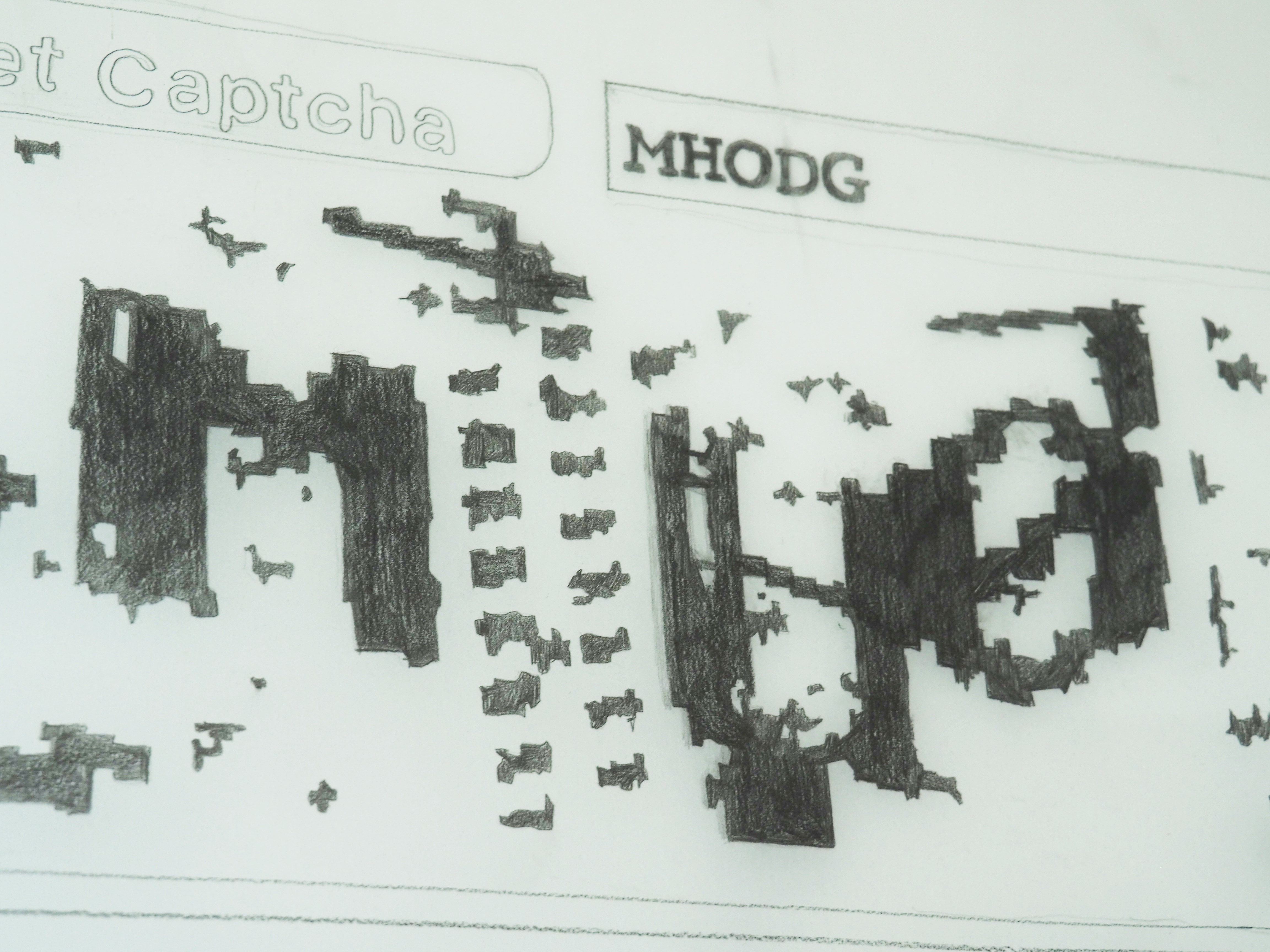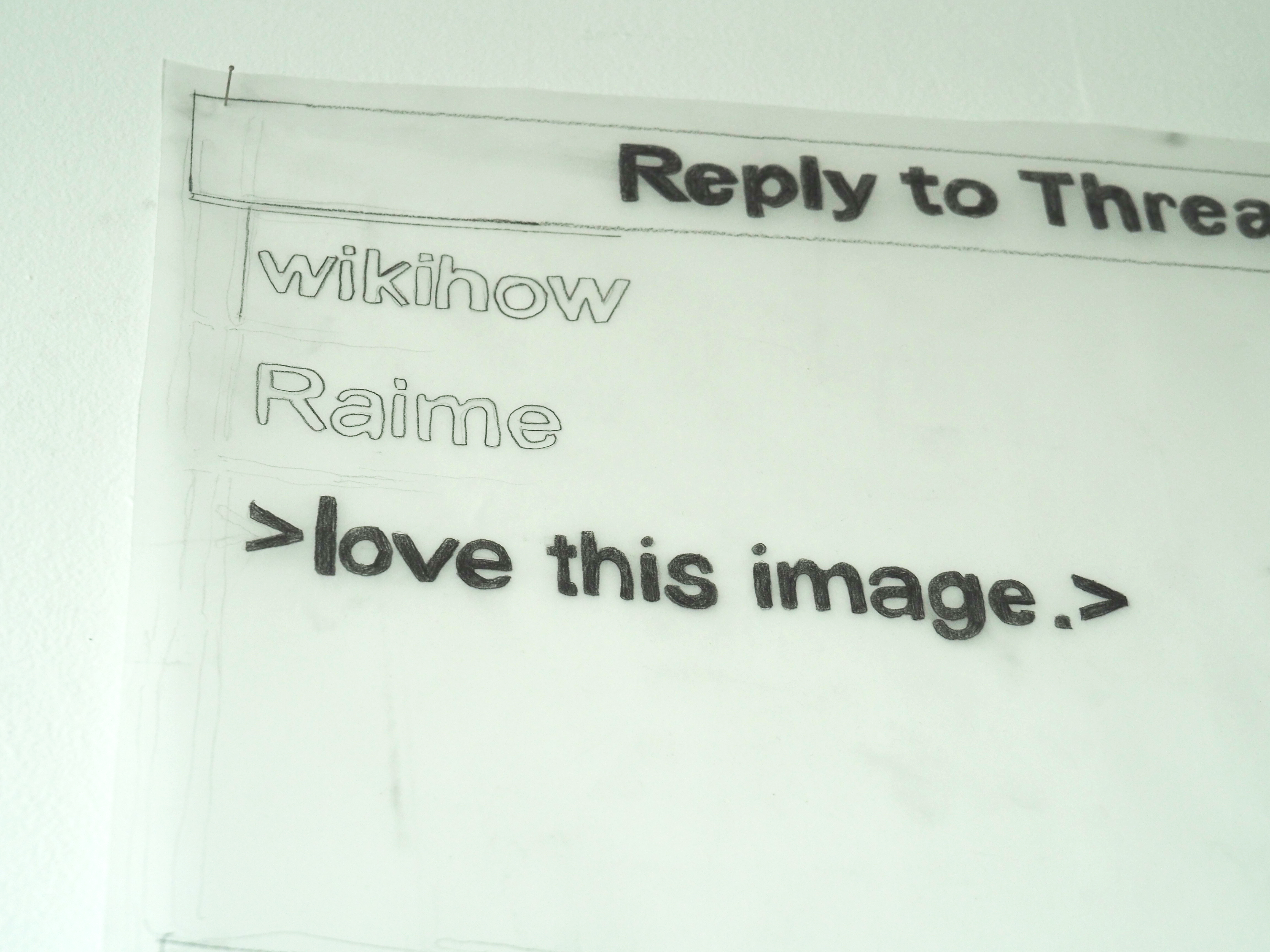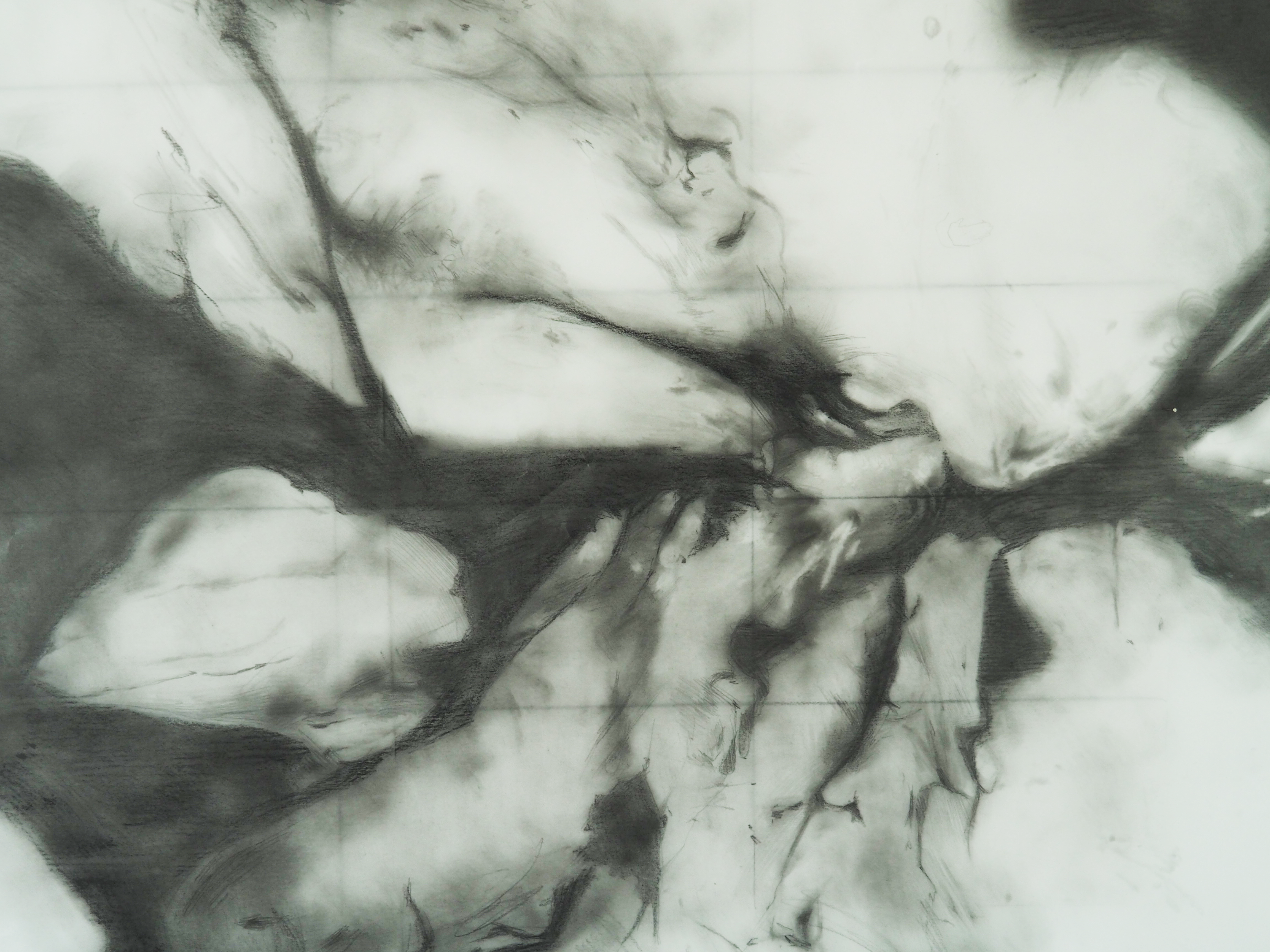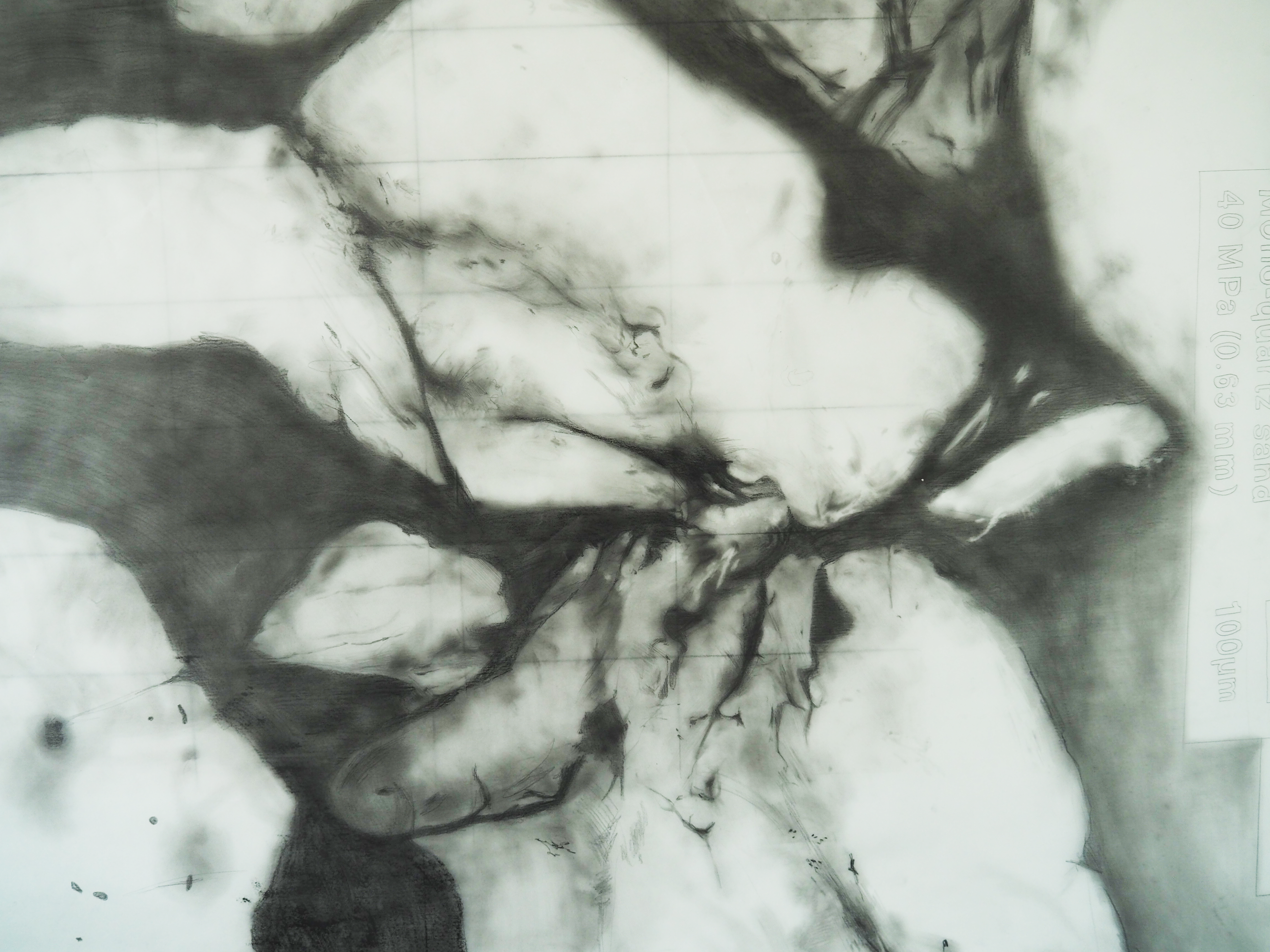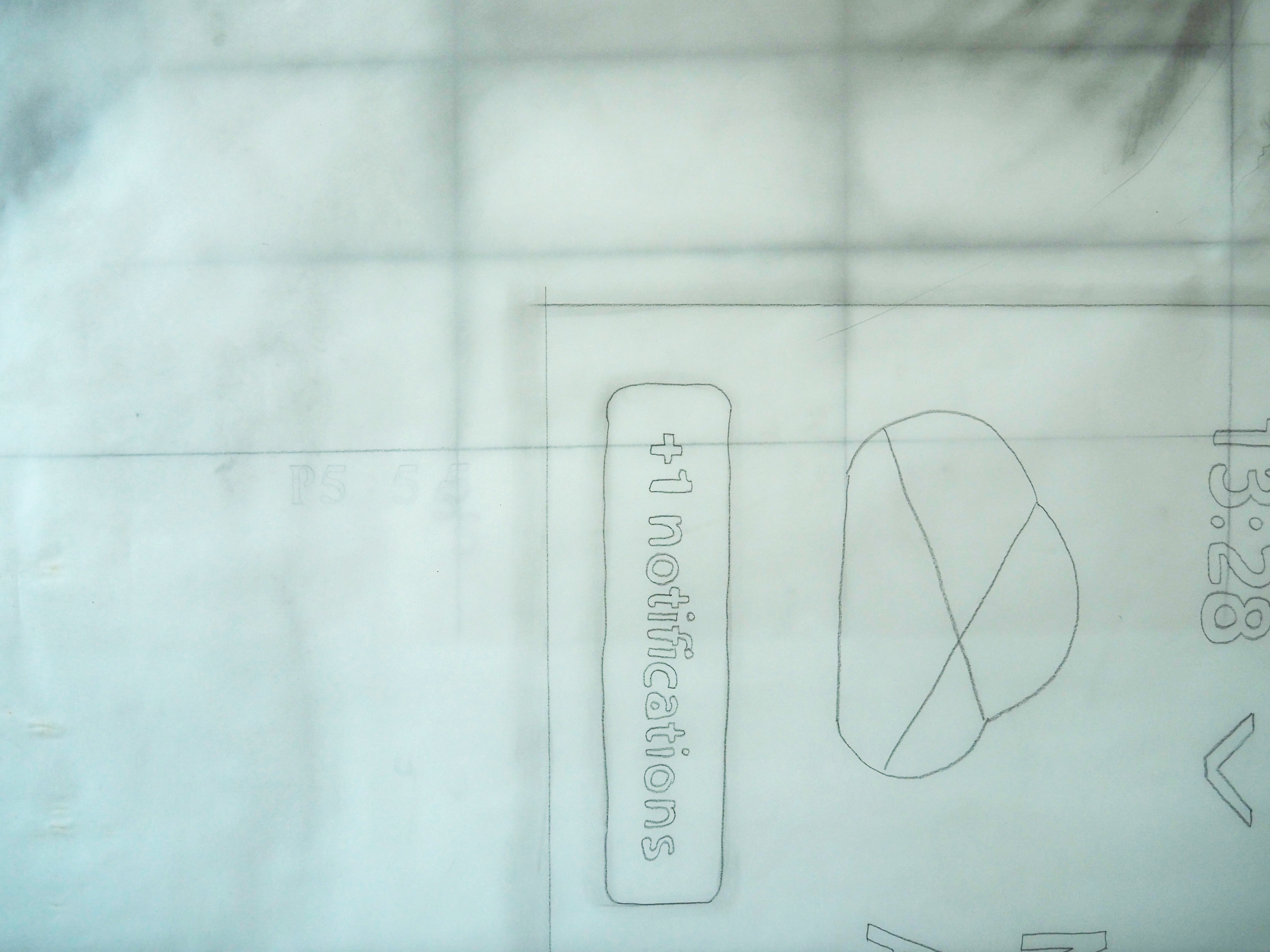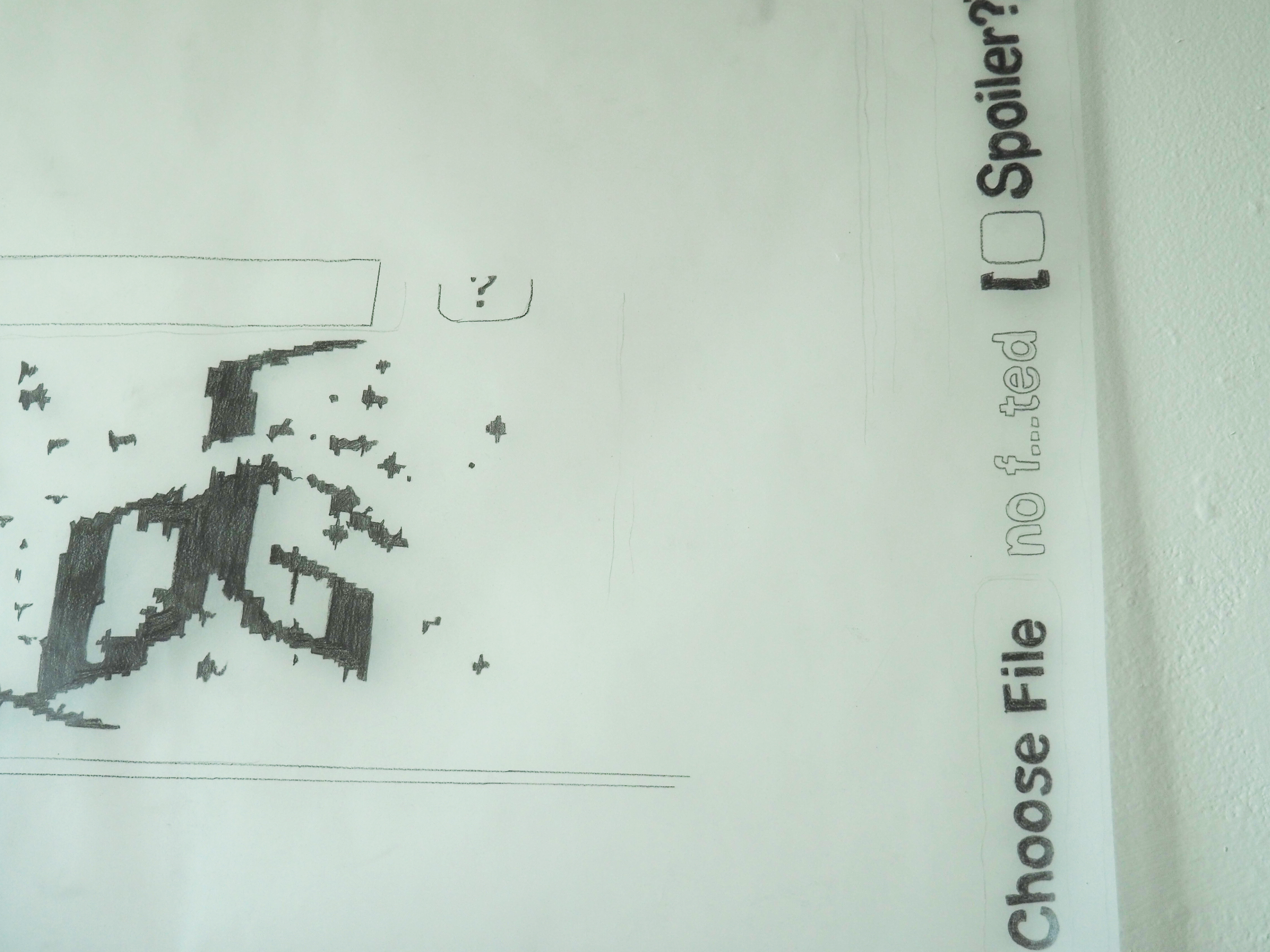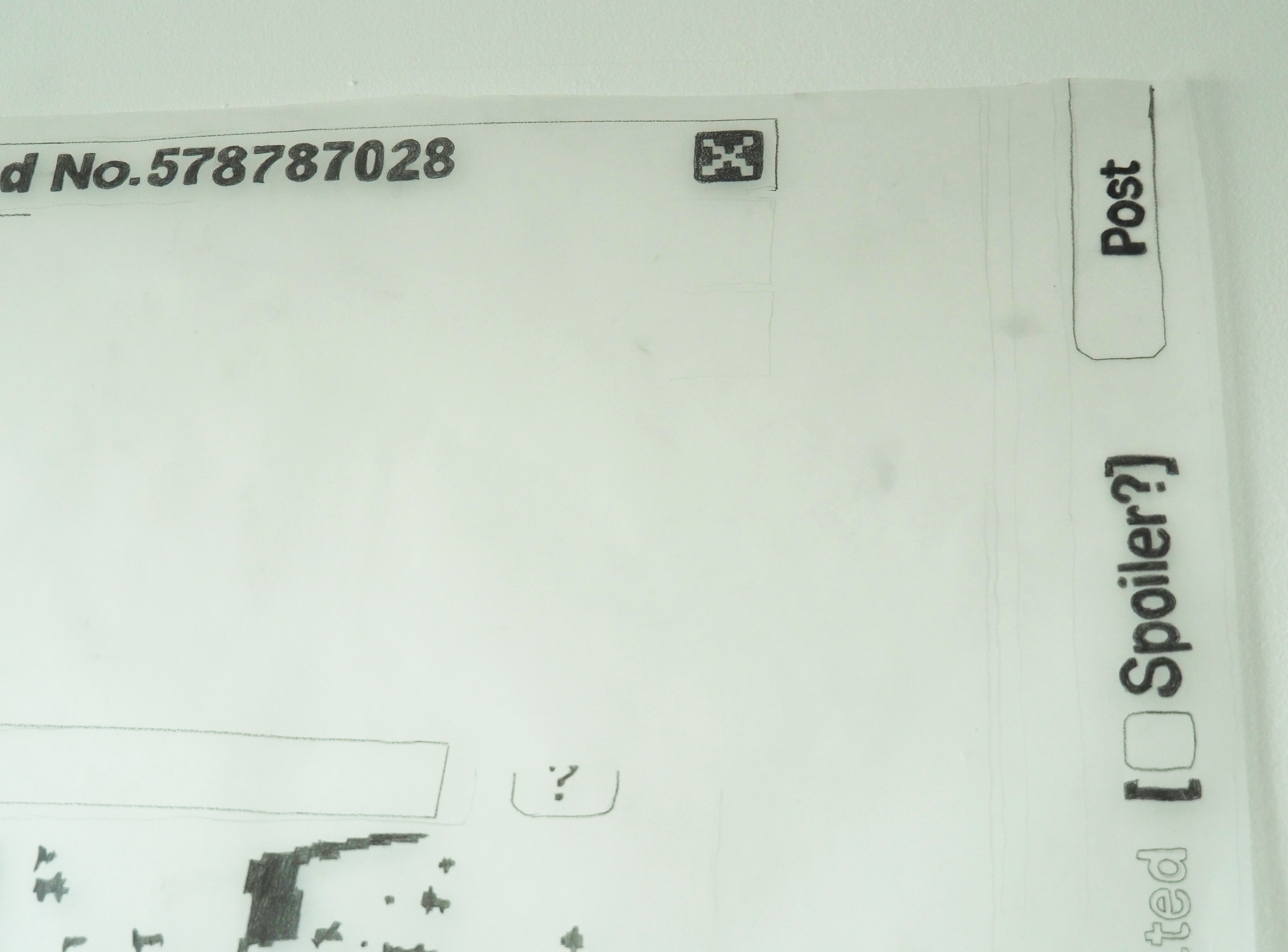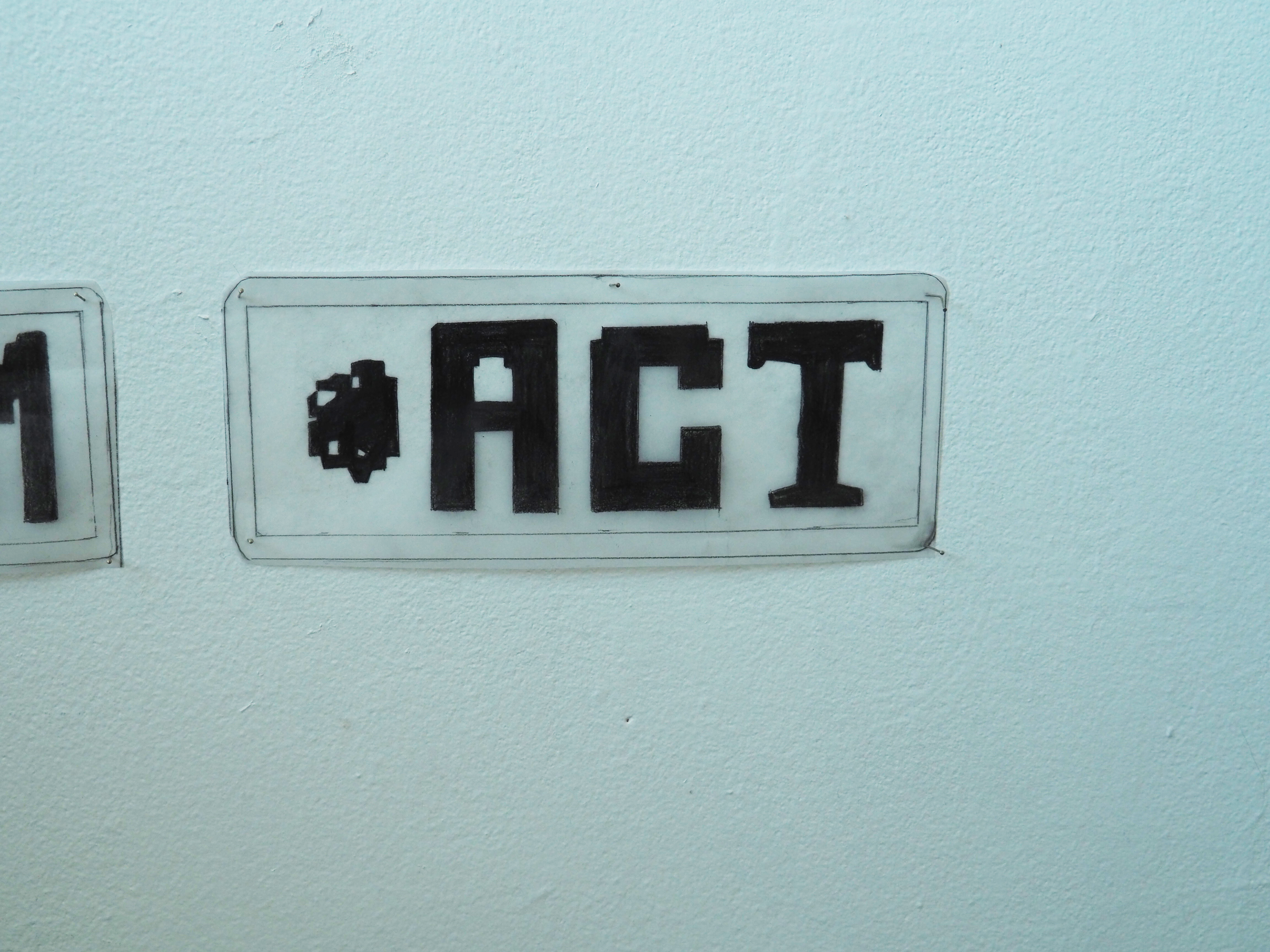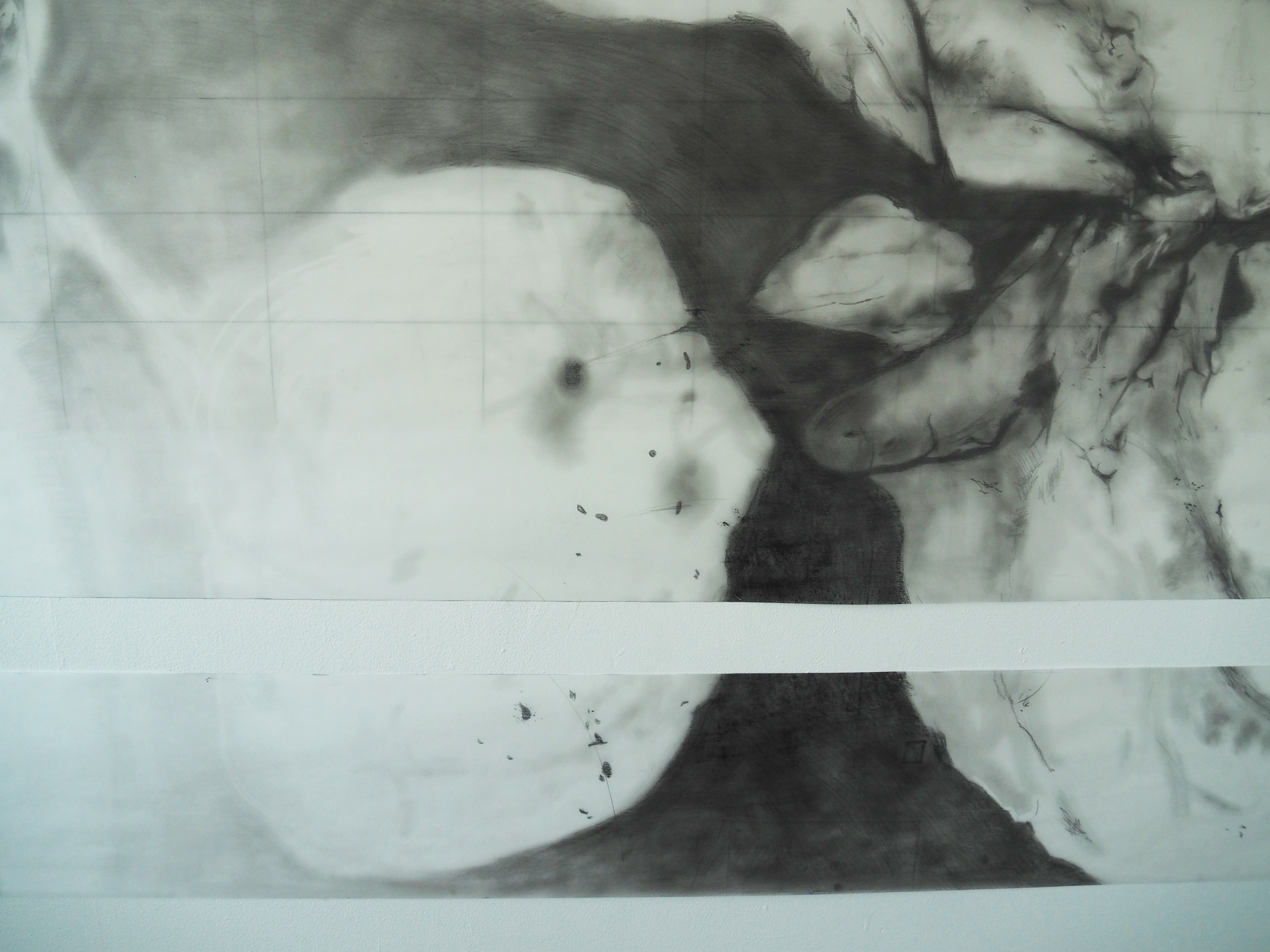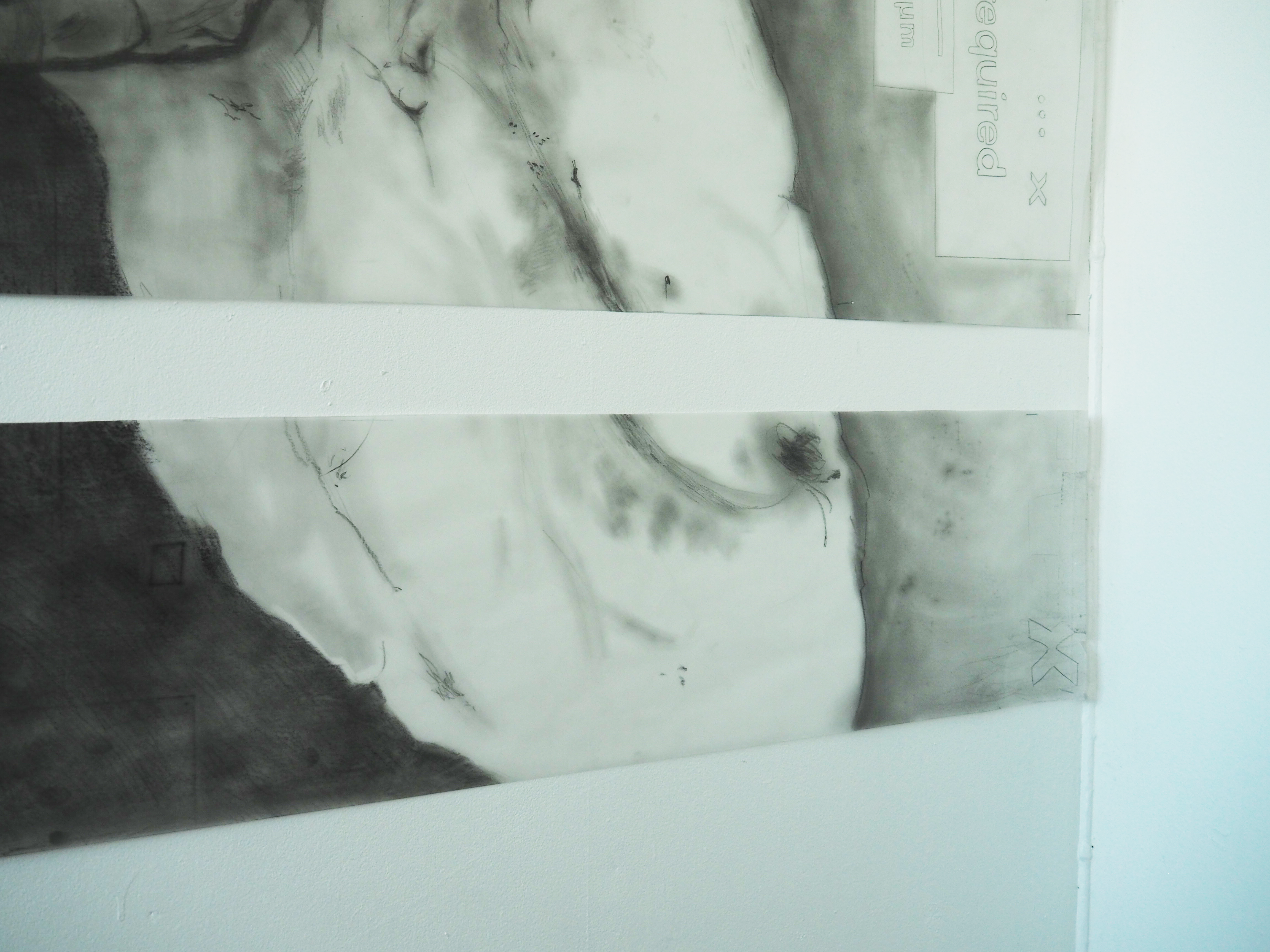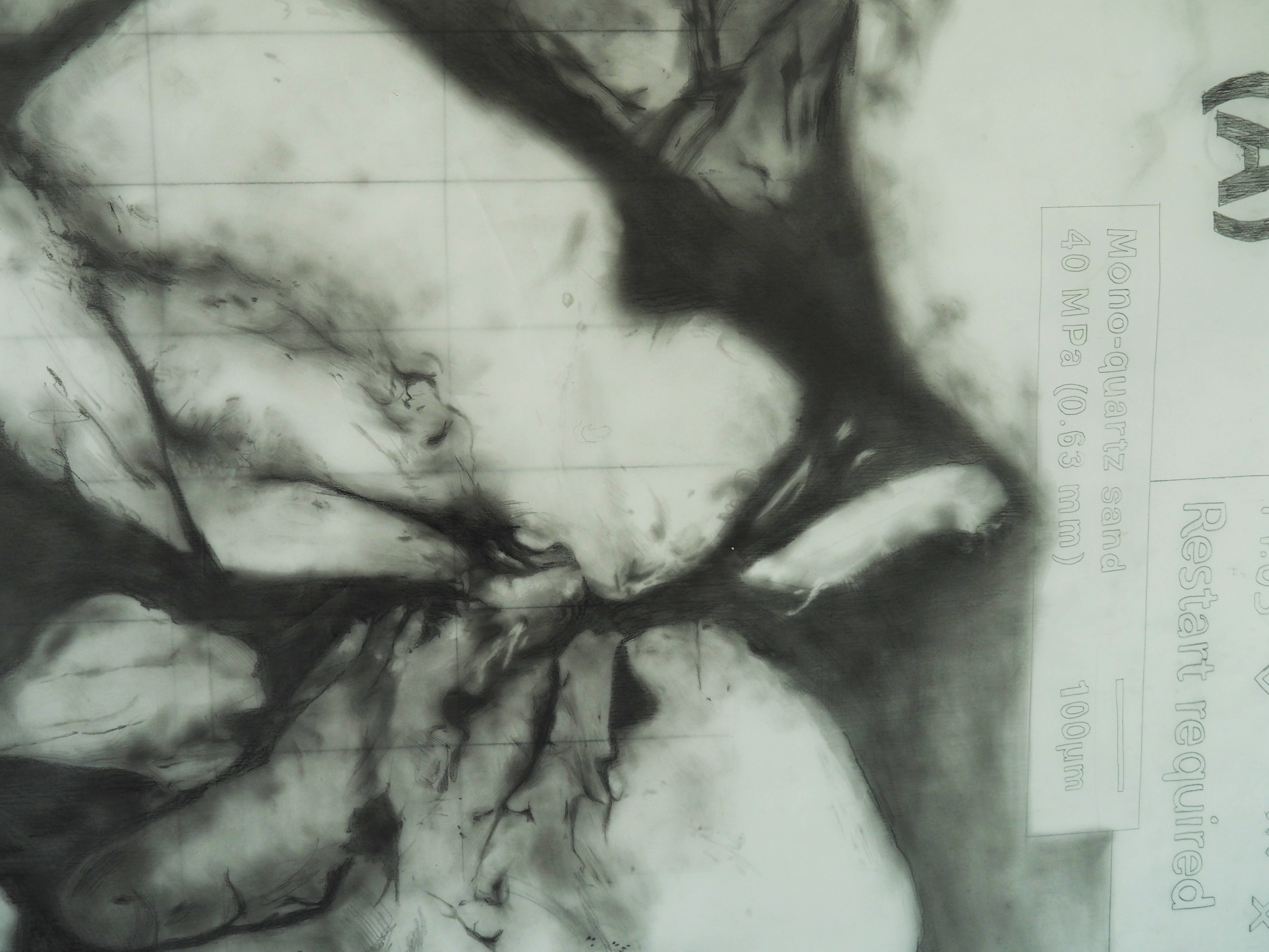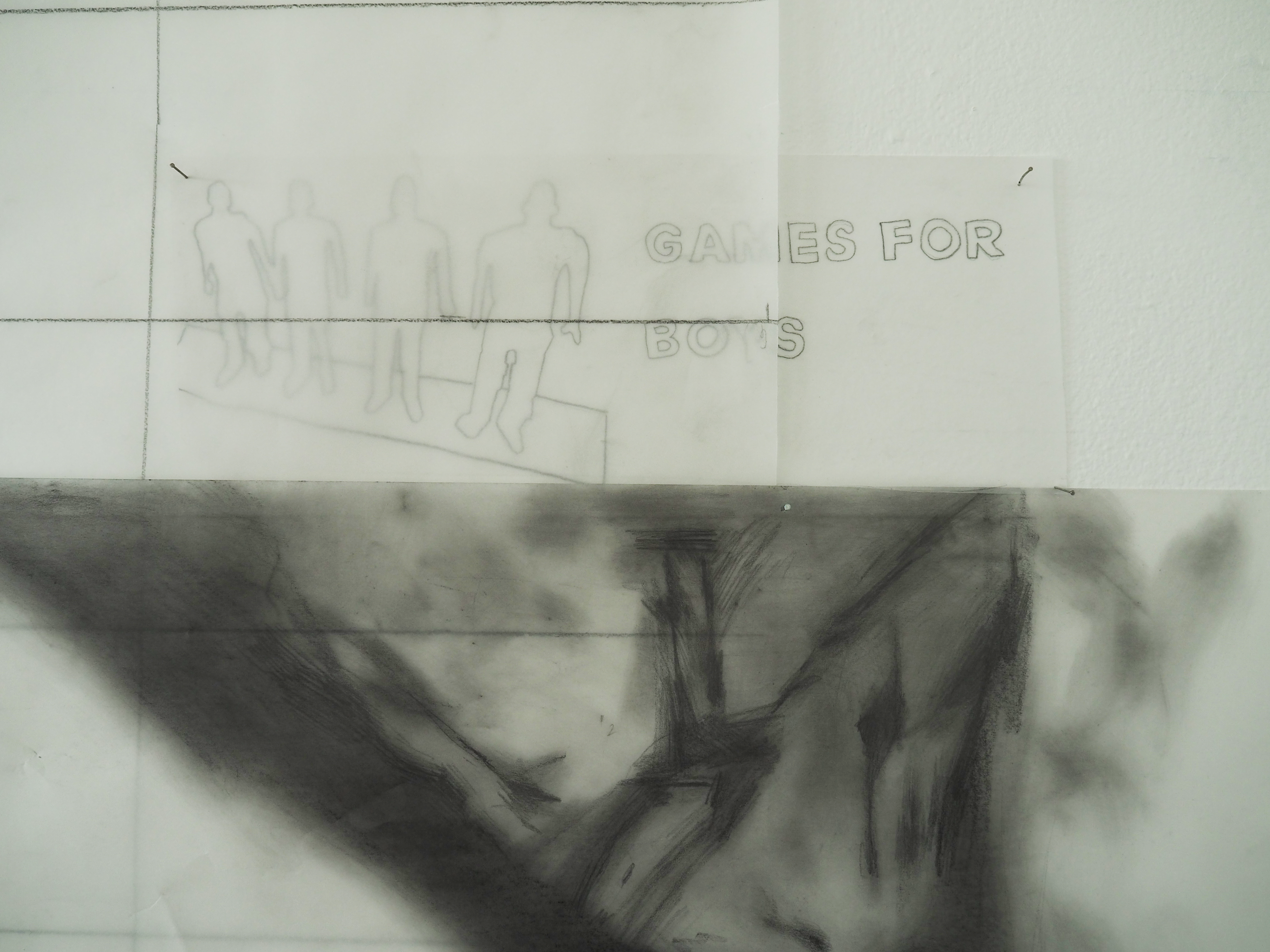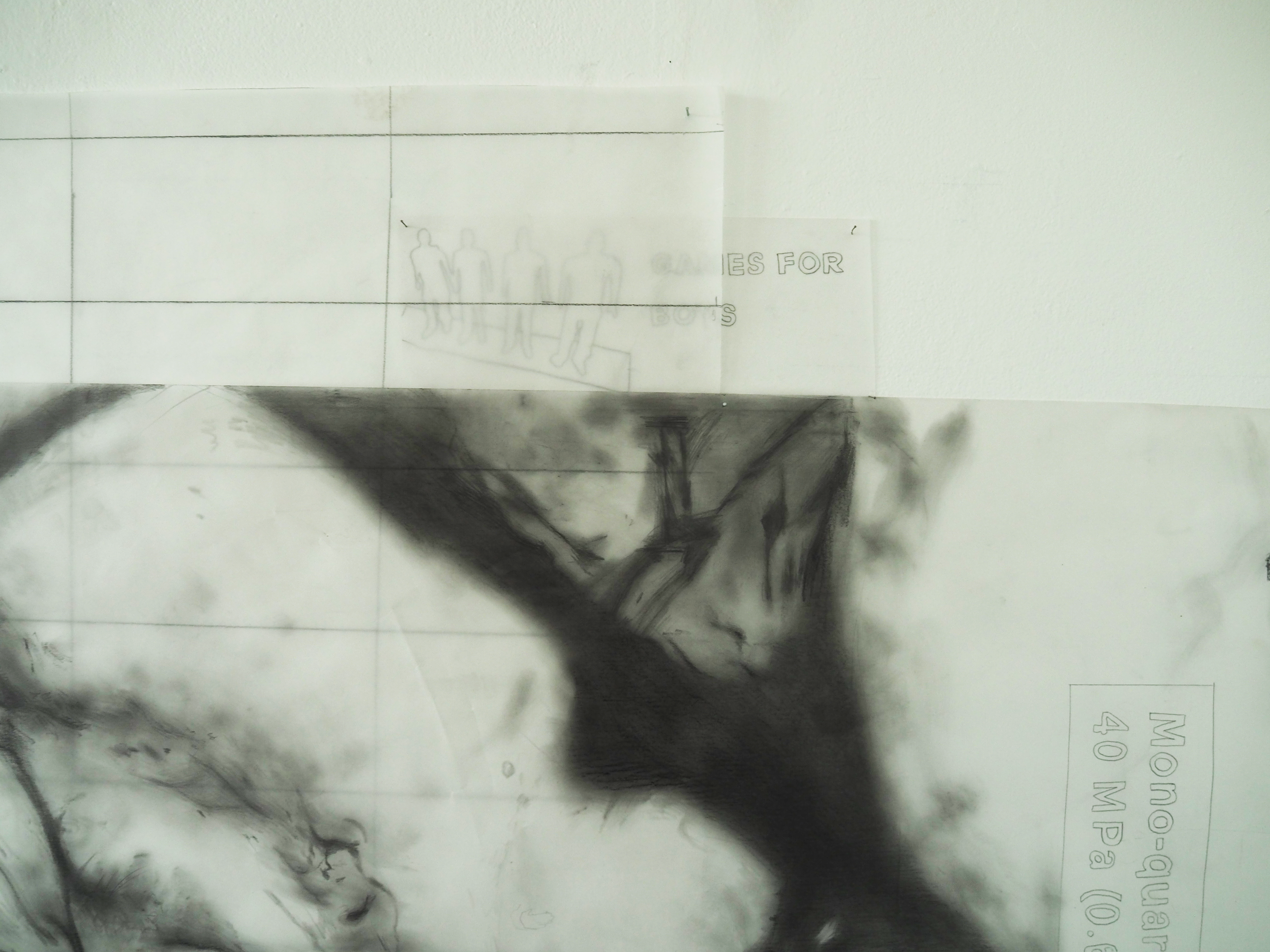Slices of Strata
galleri Blunk, Trondheim NO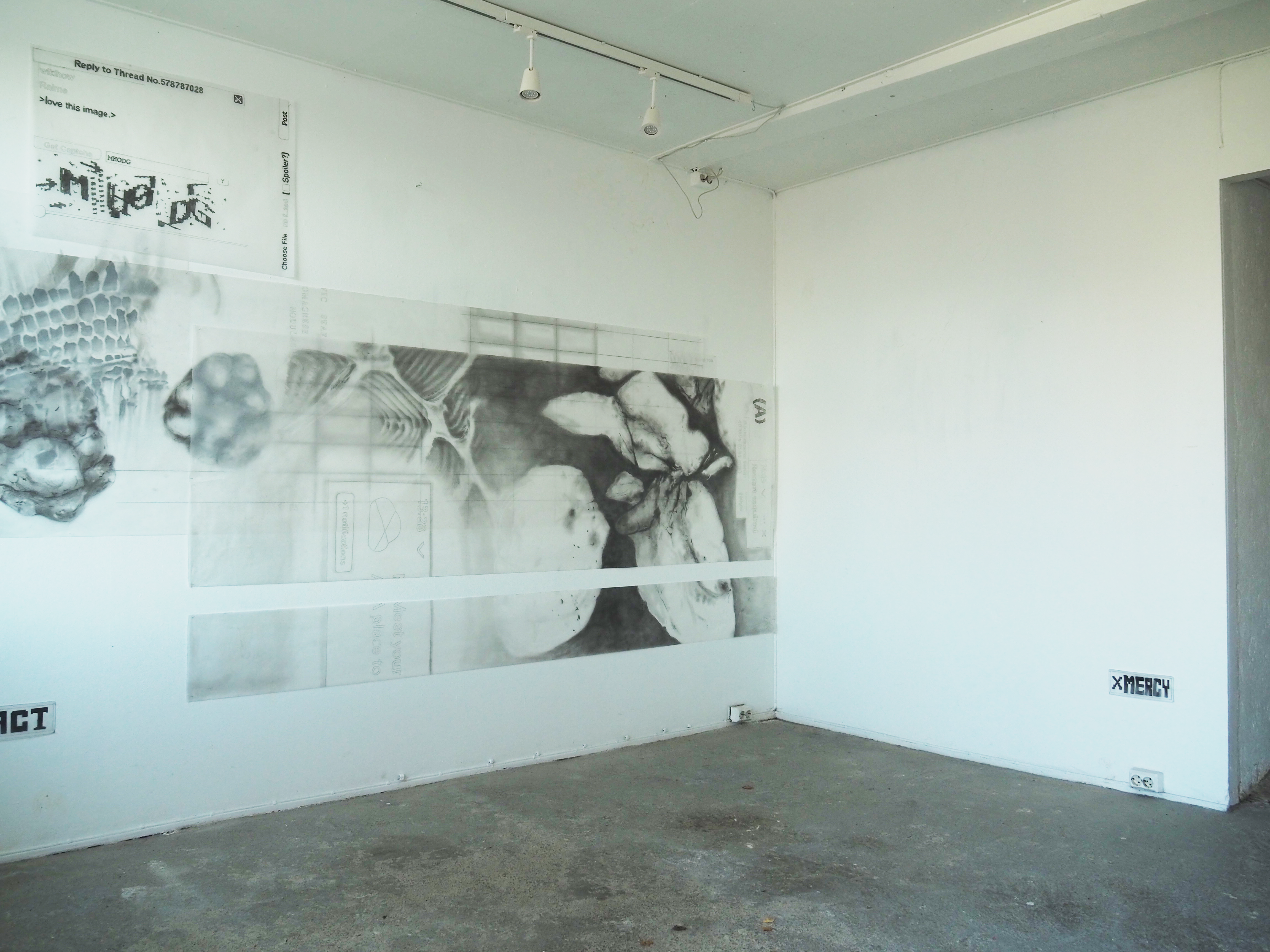
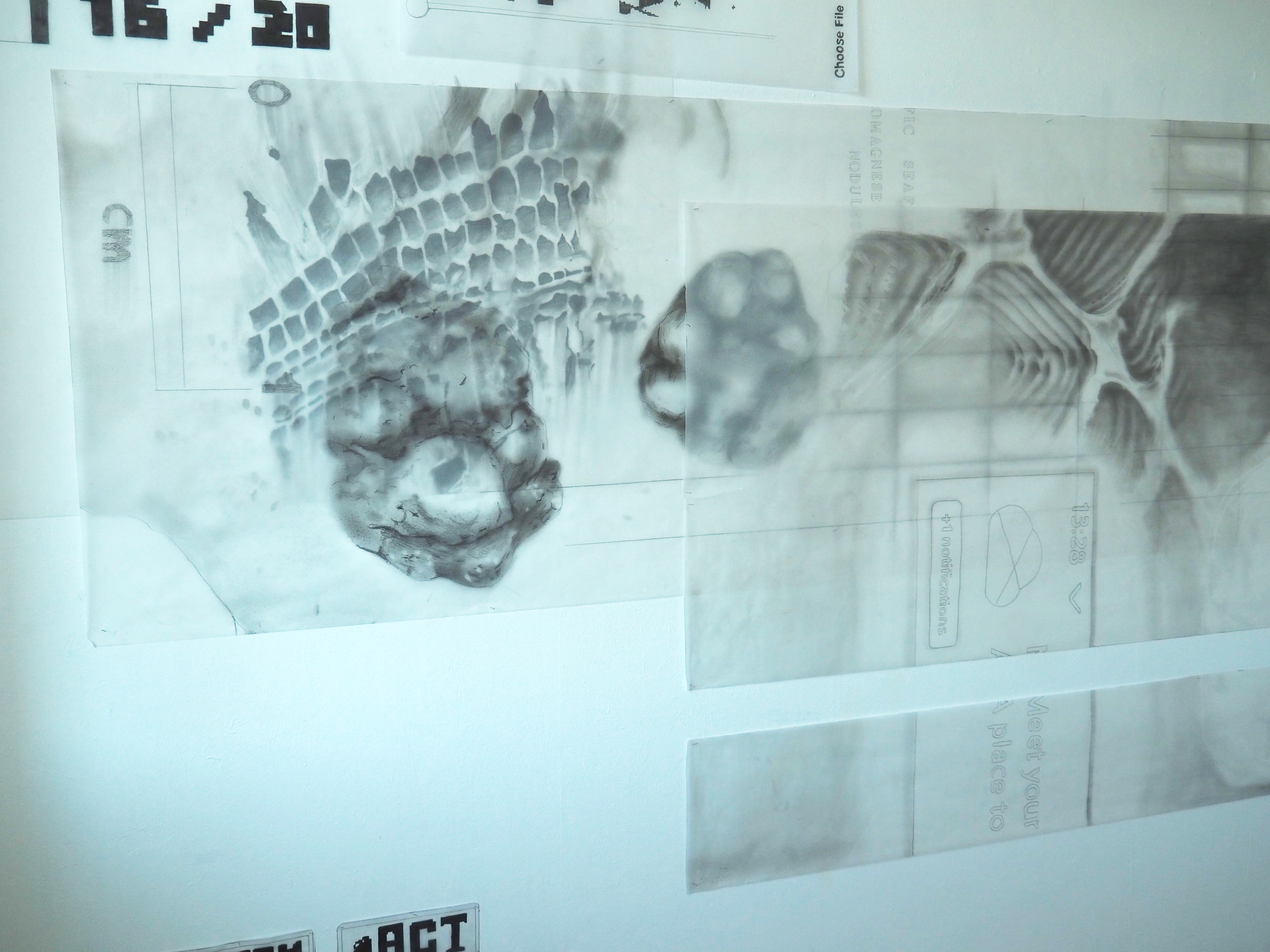
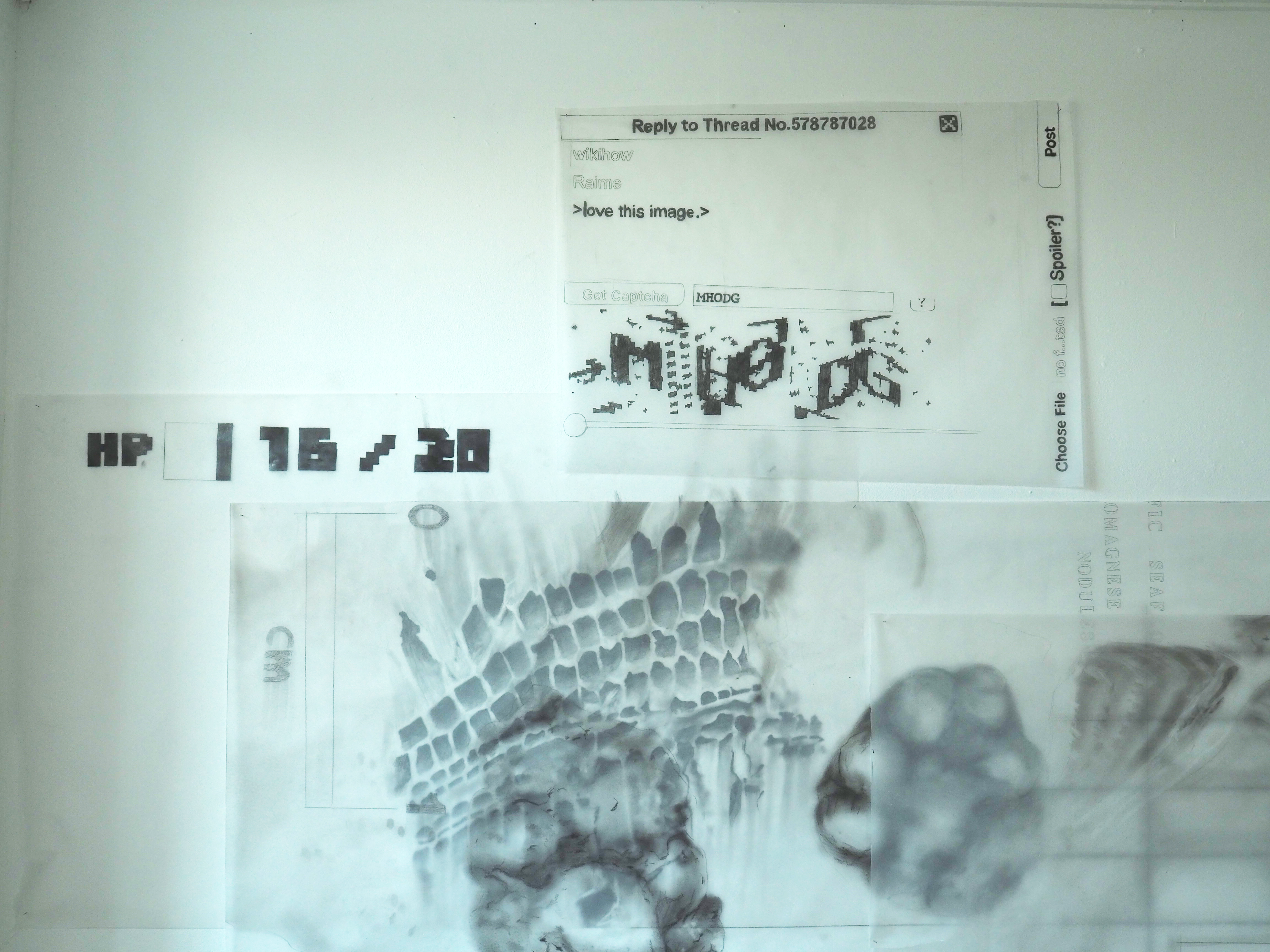
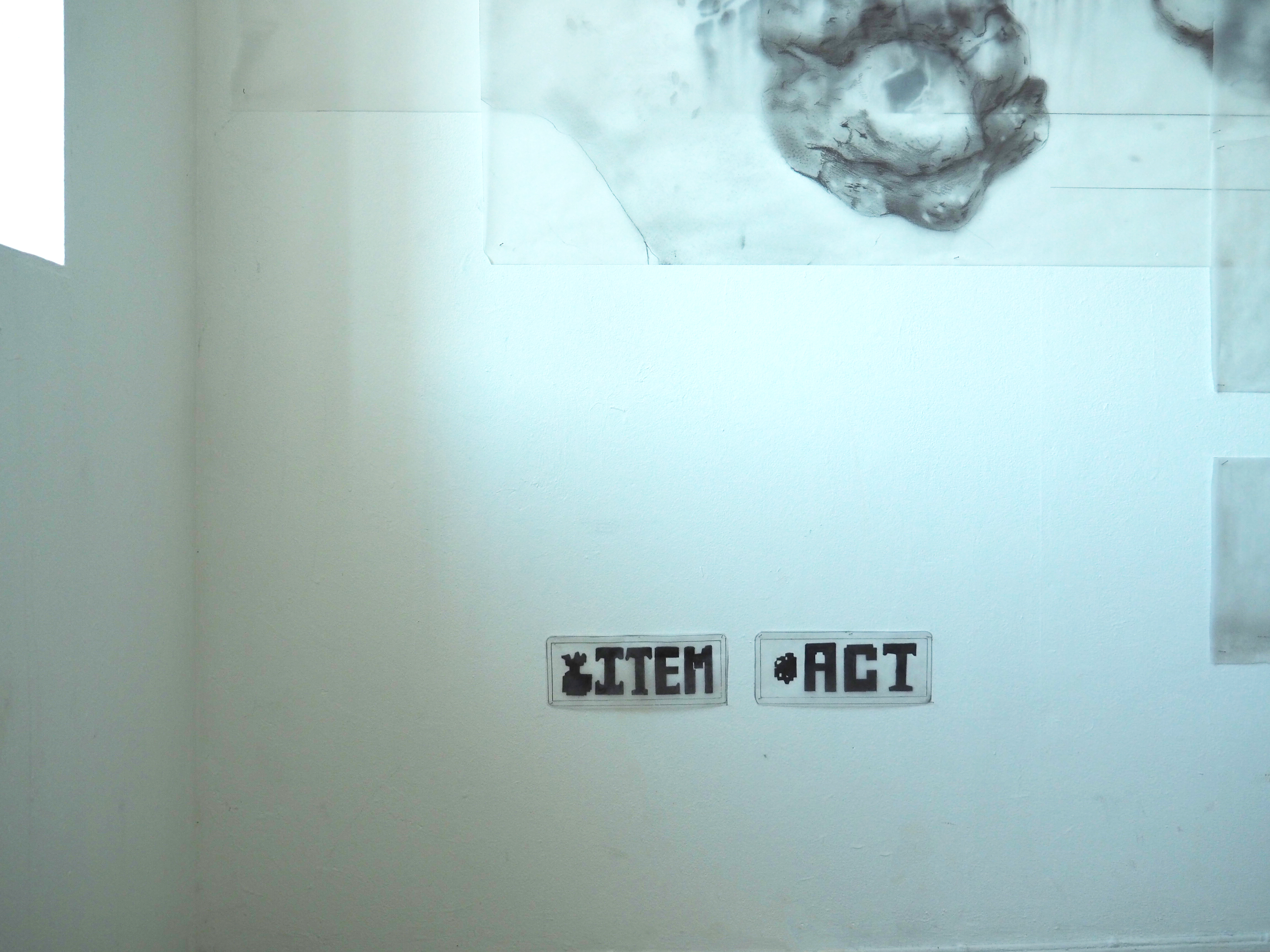
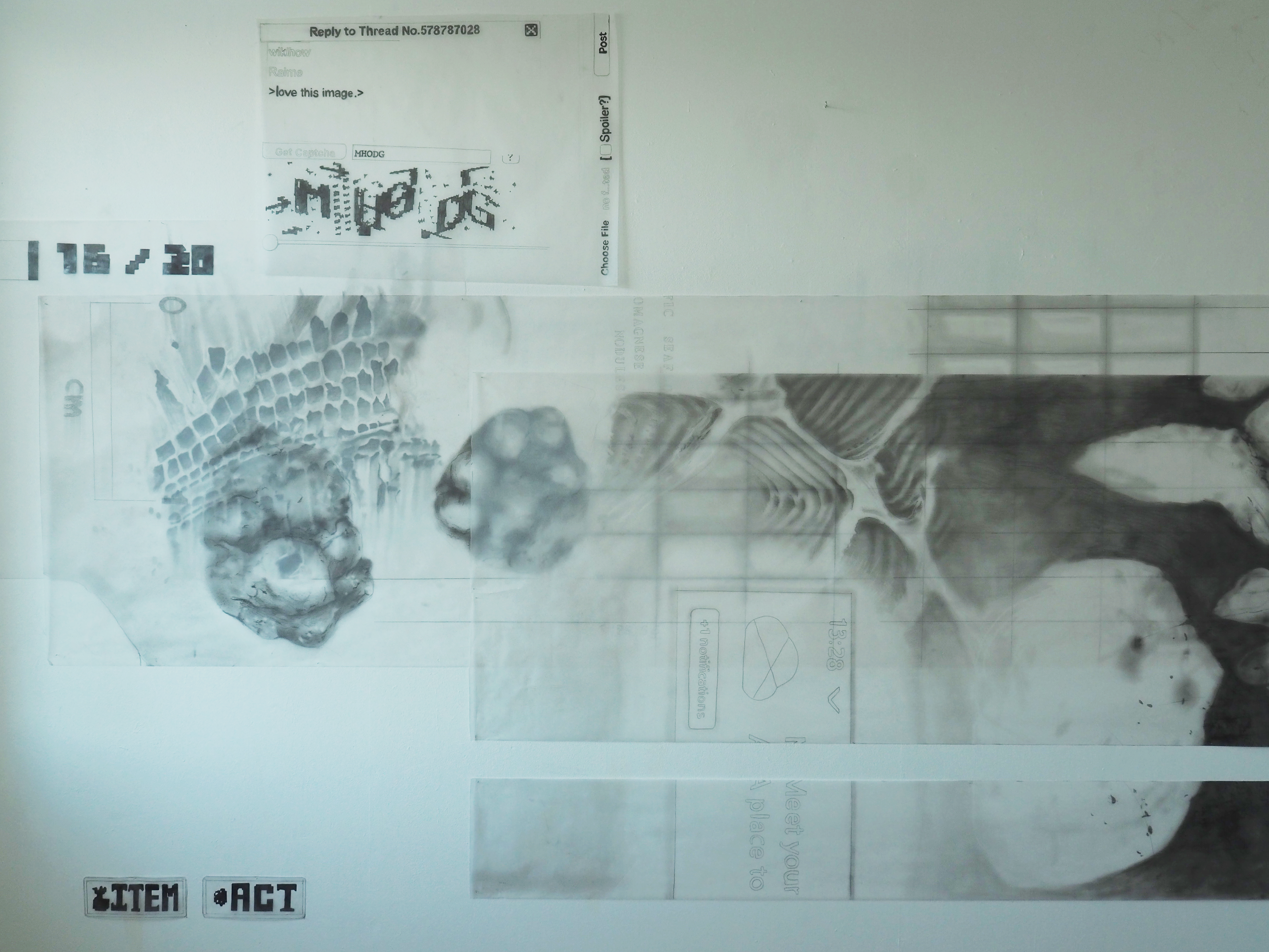
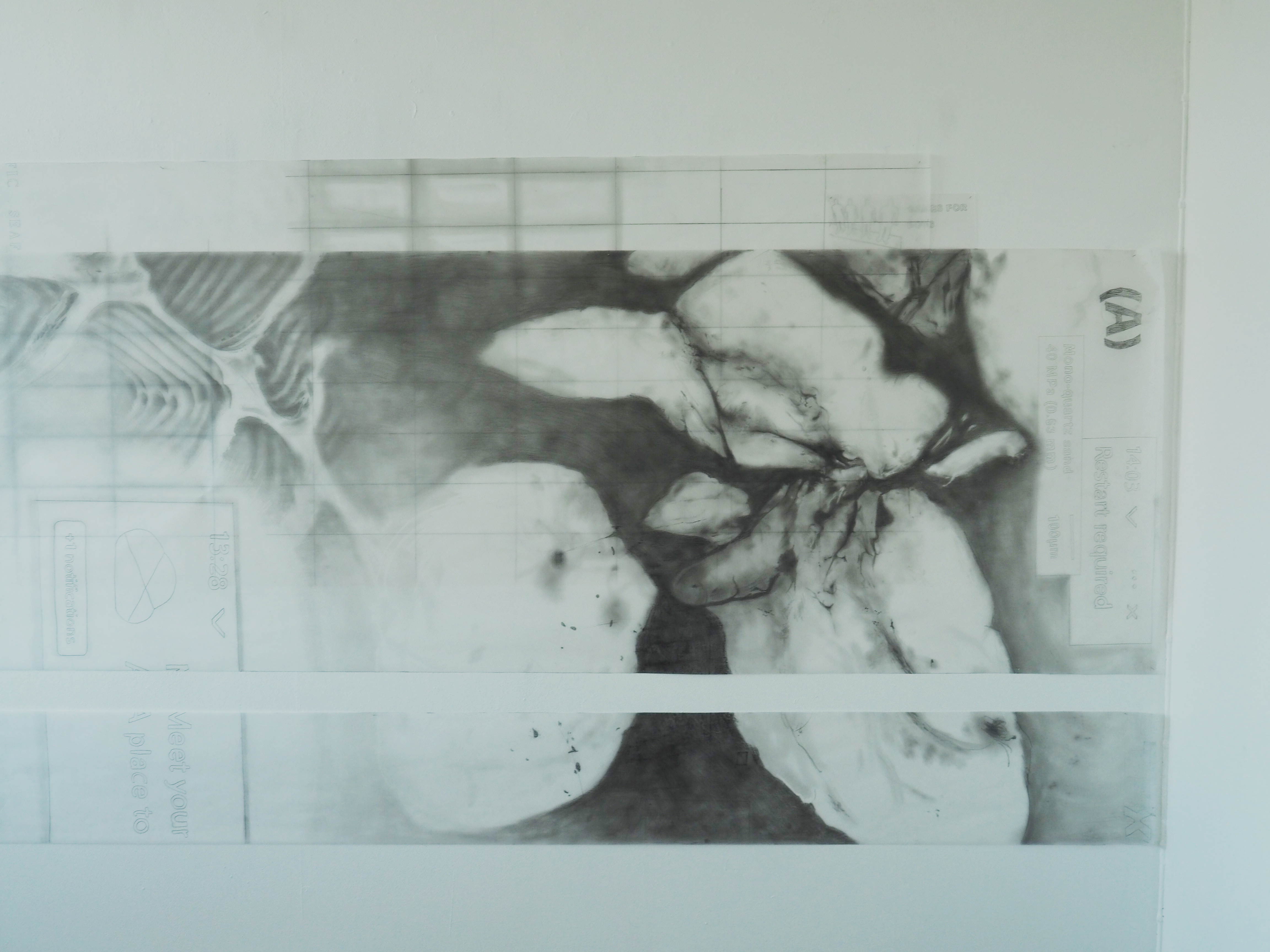
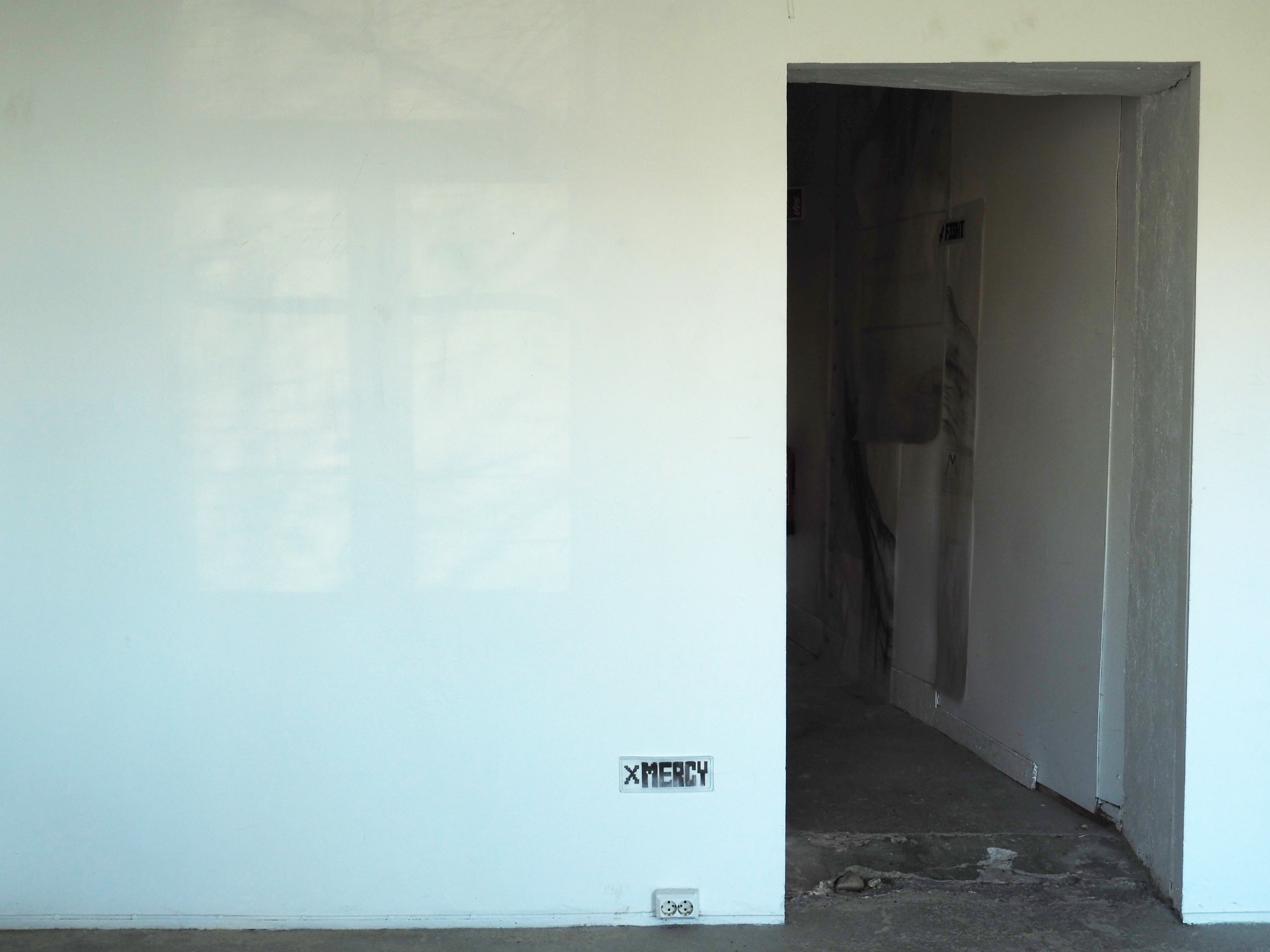
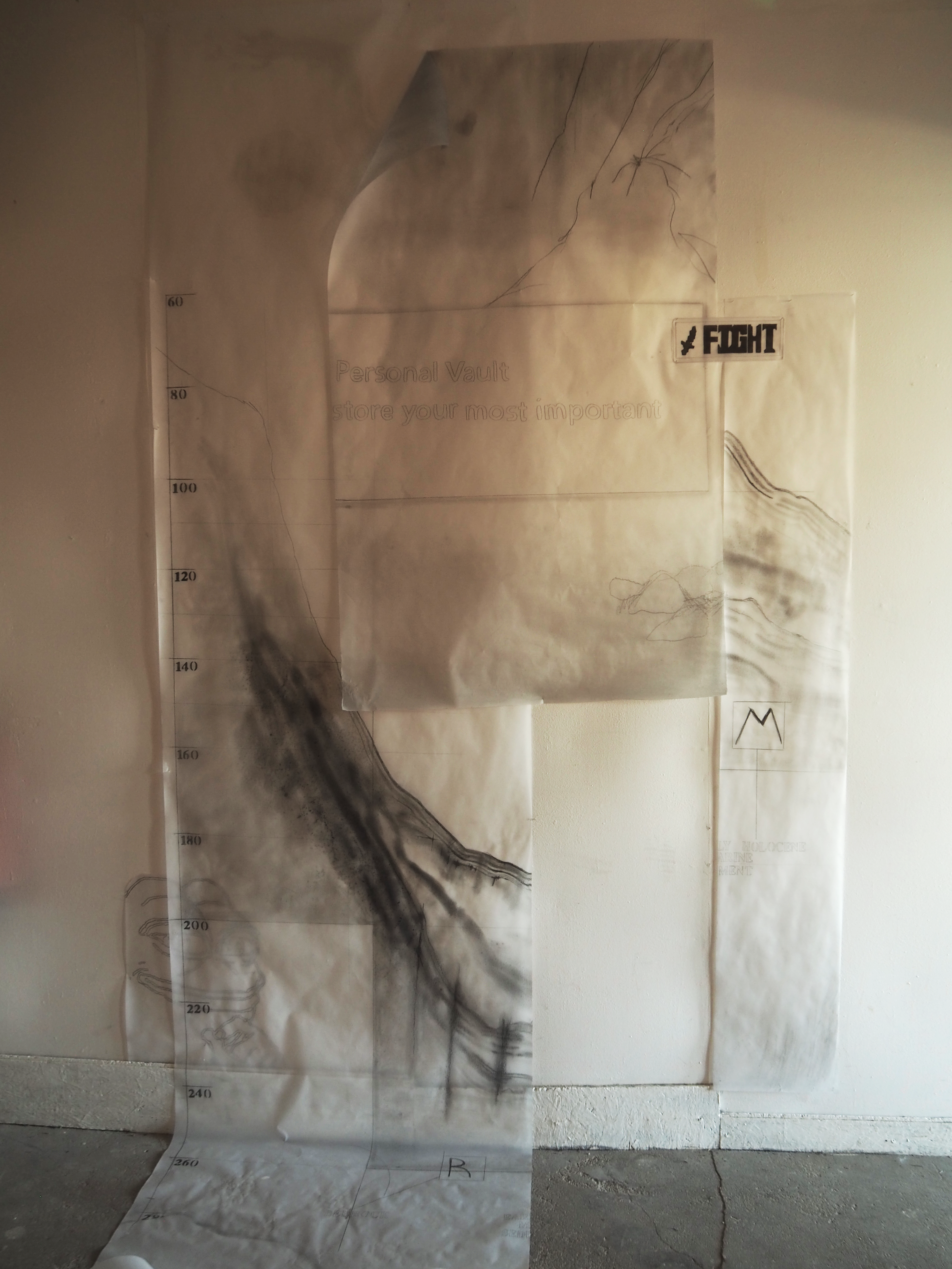
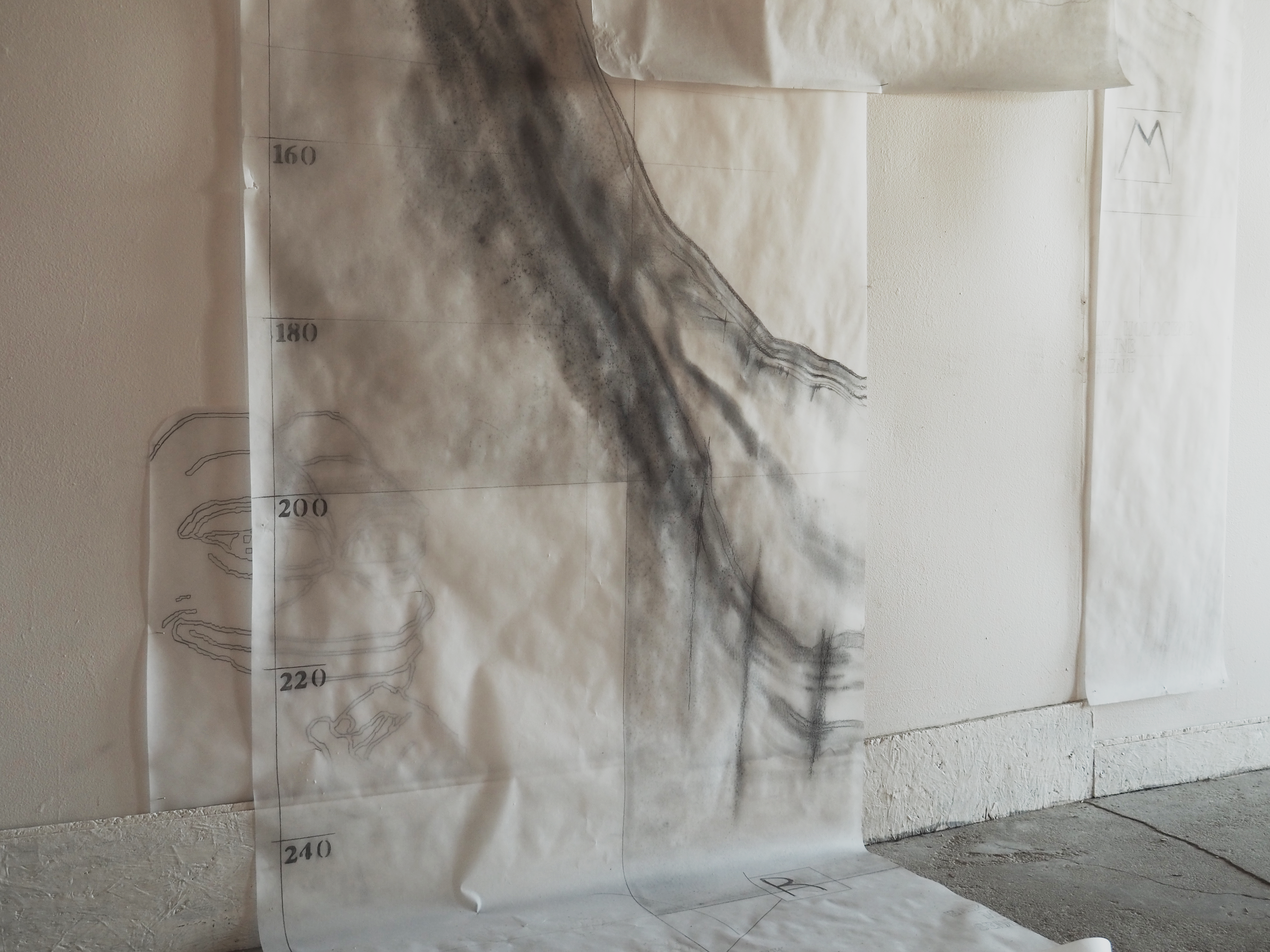
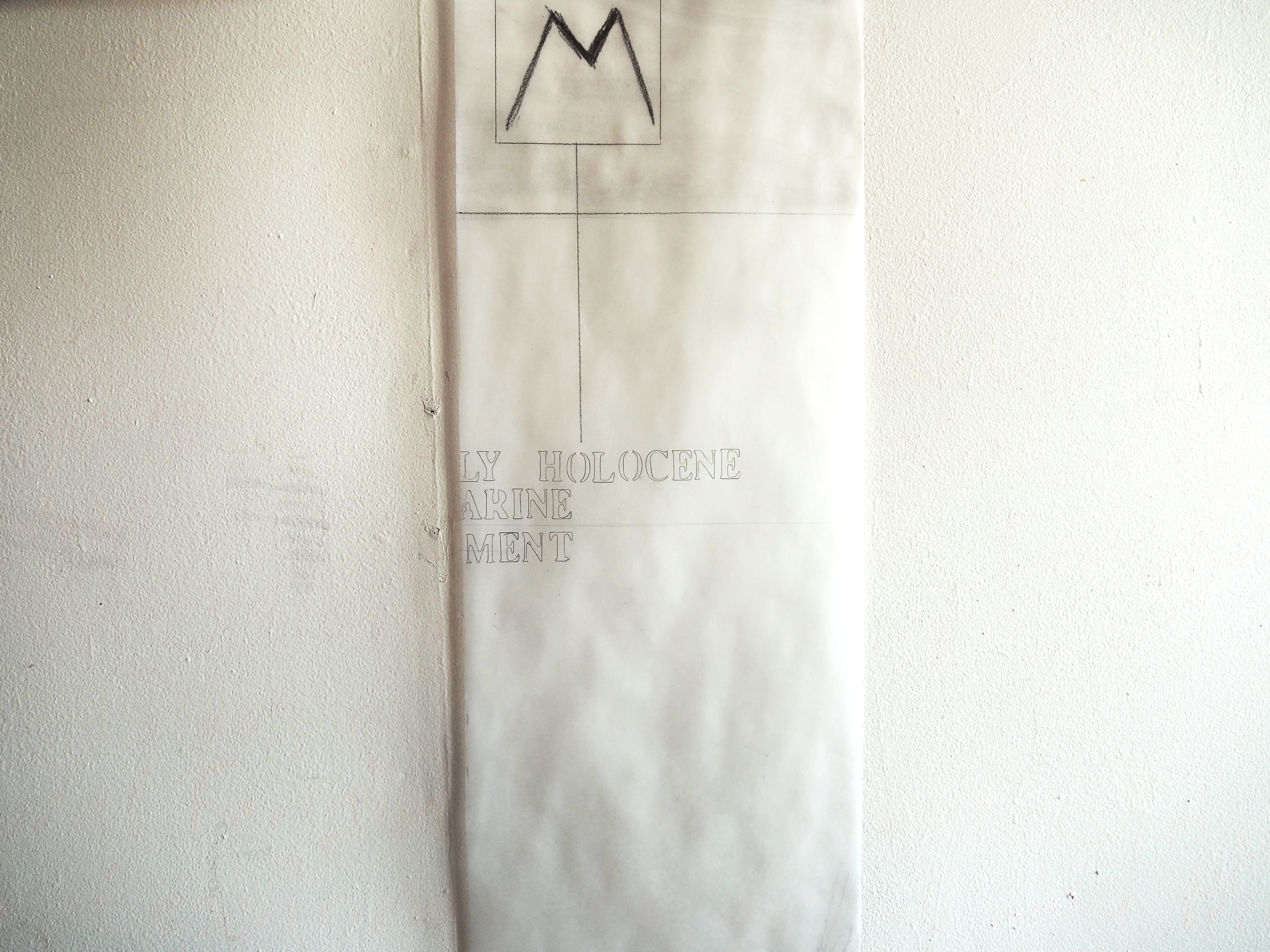
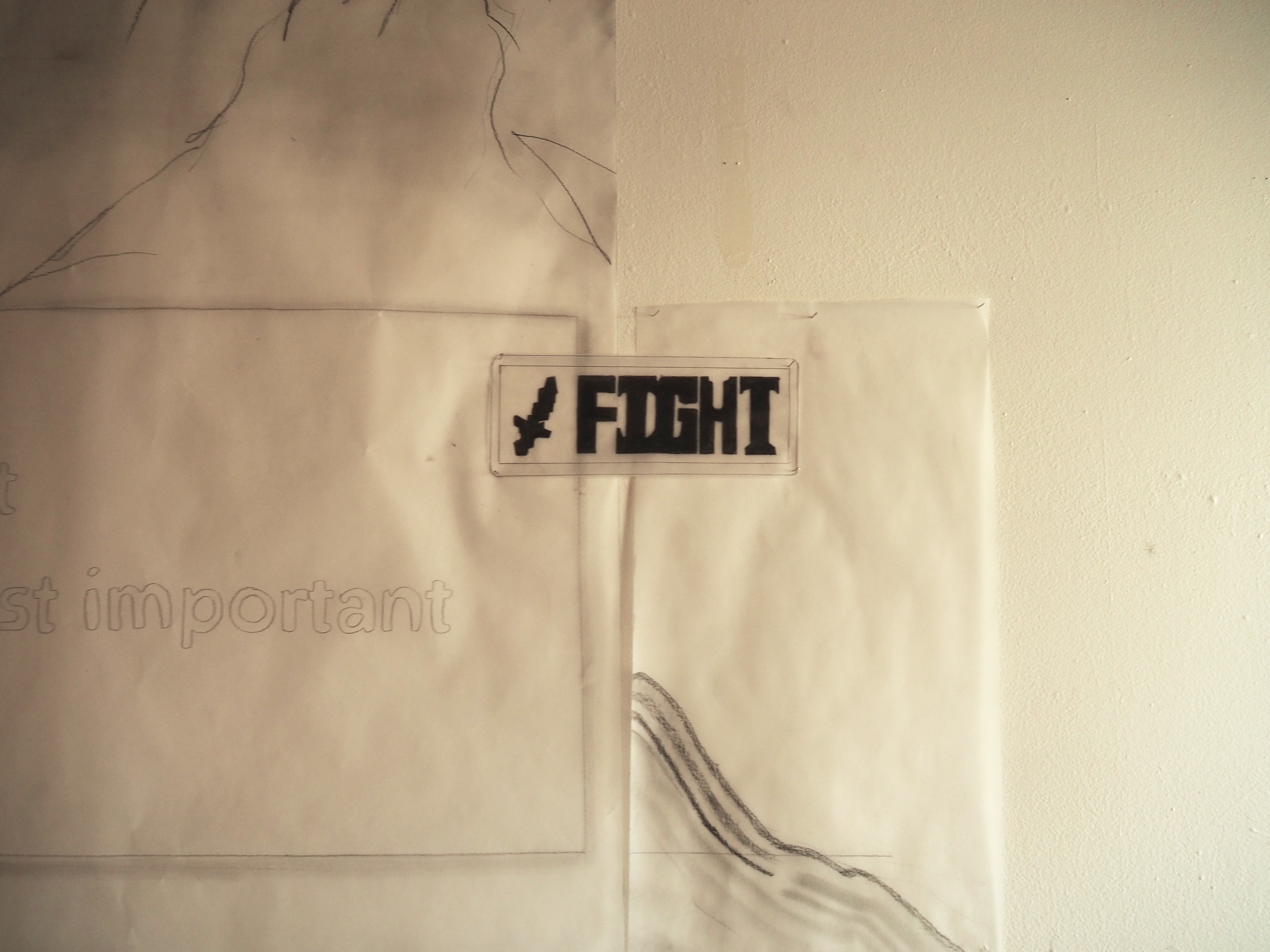

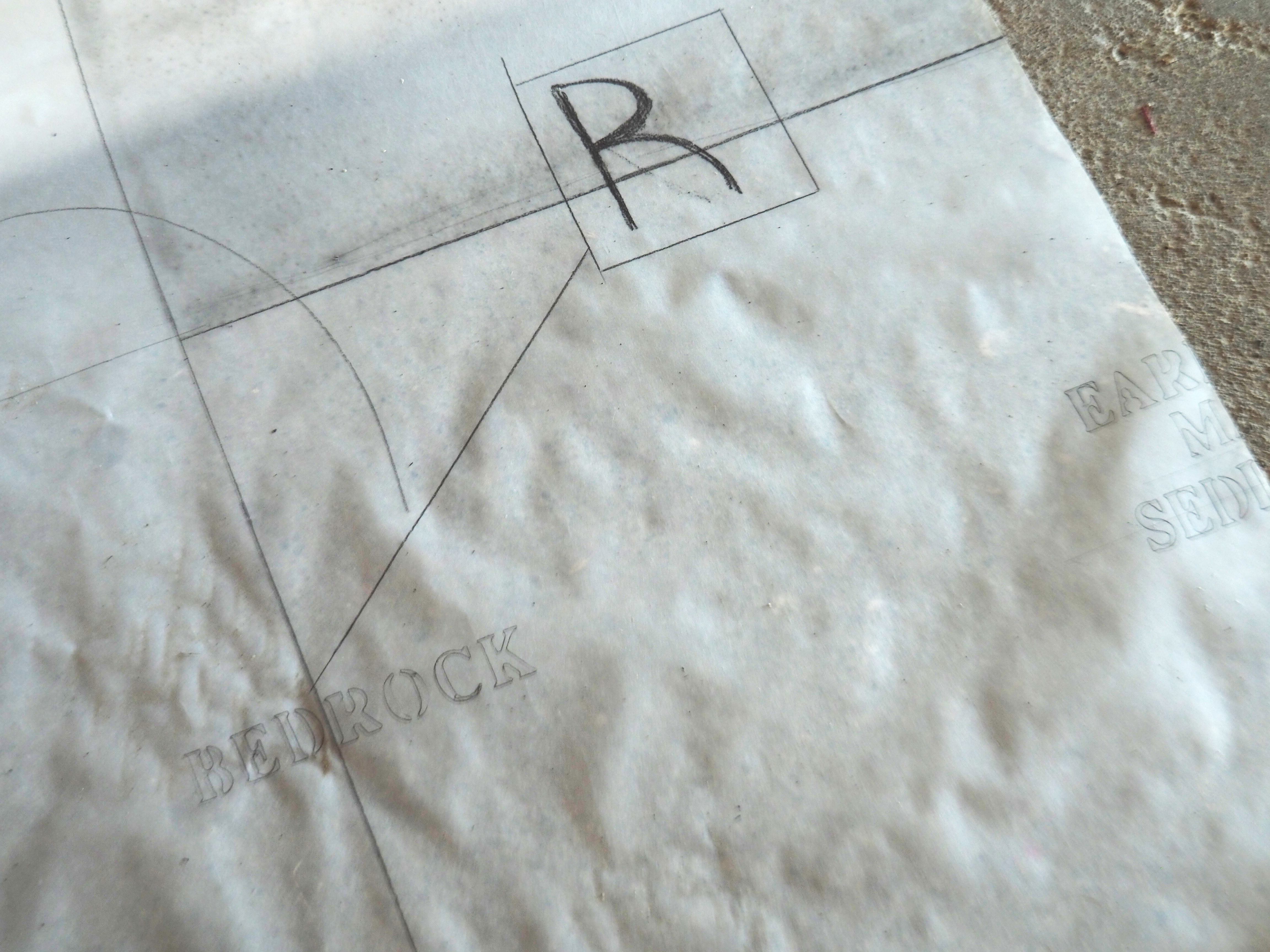
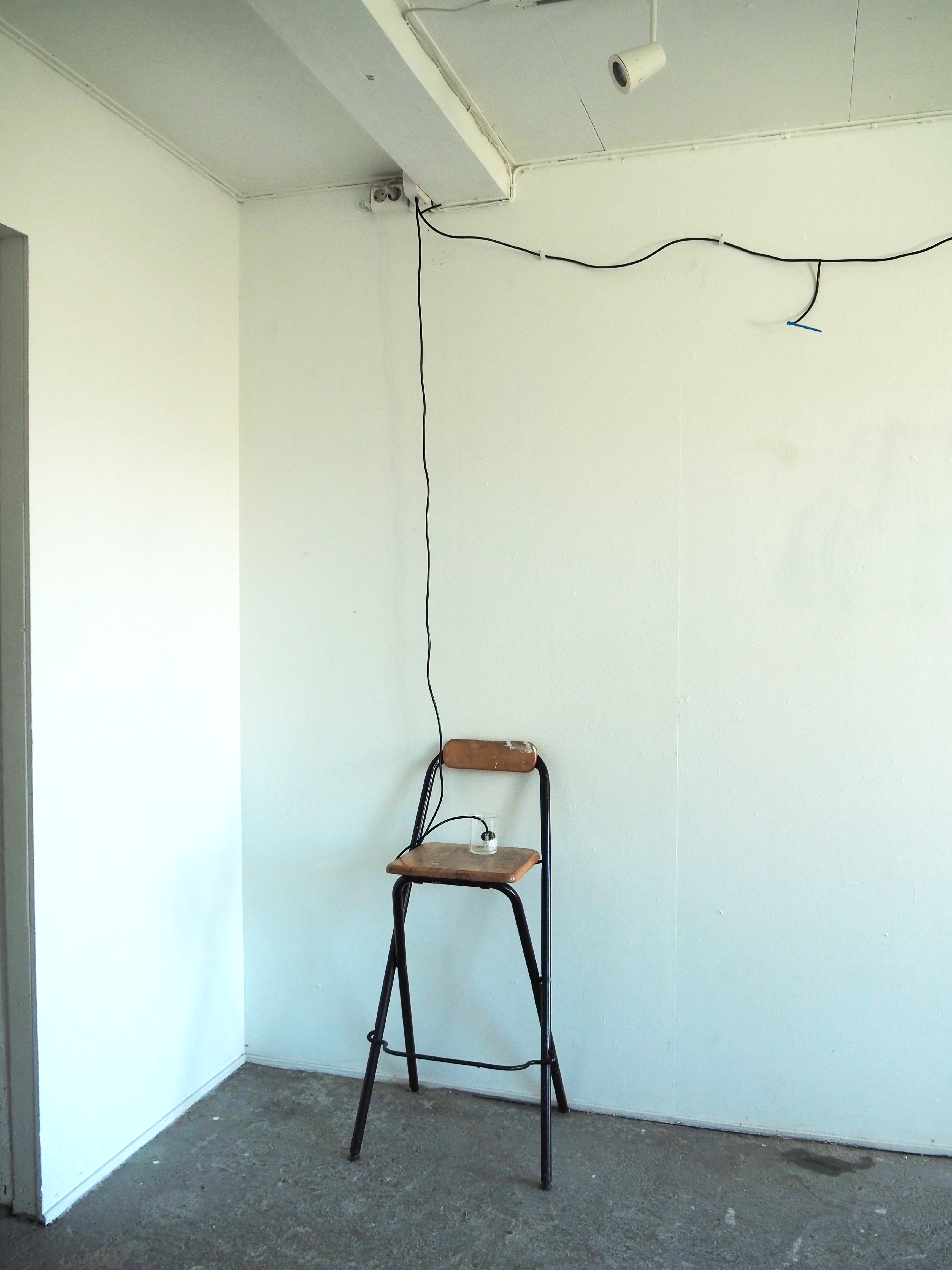
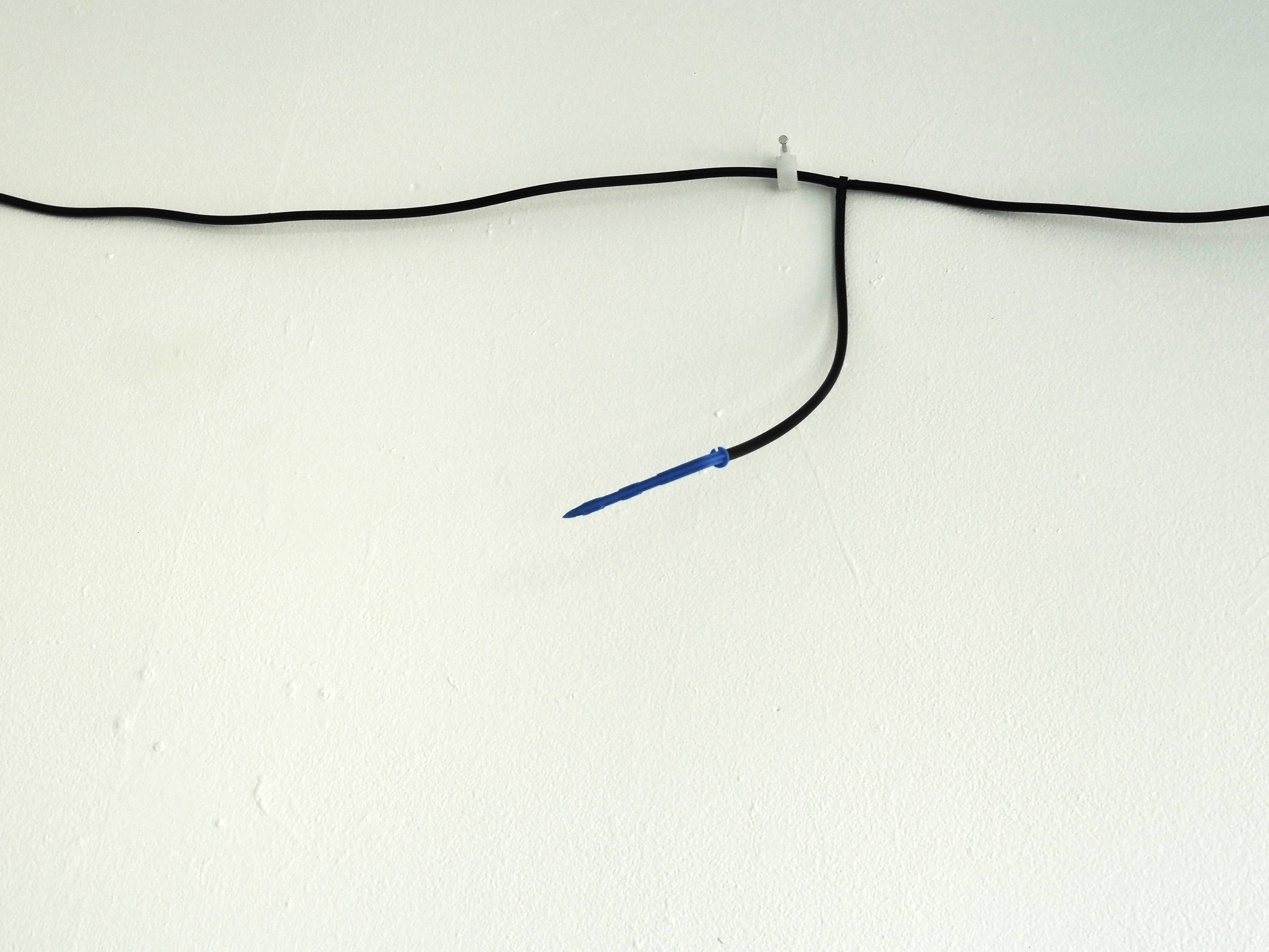
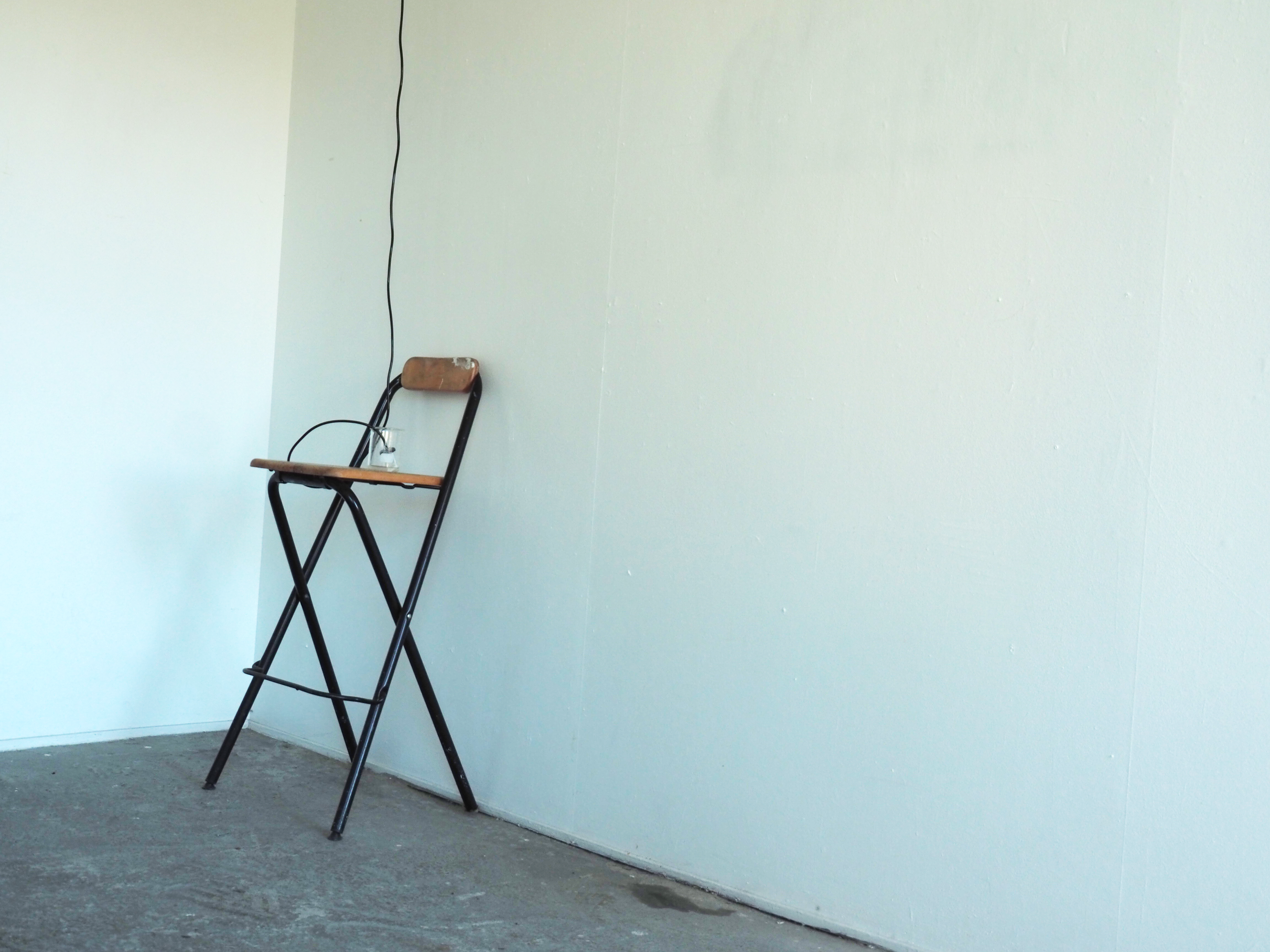
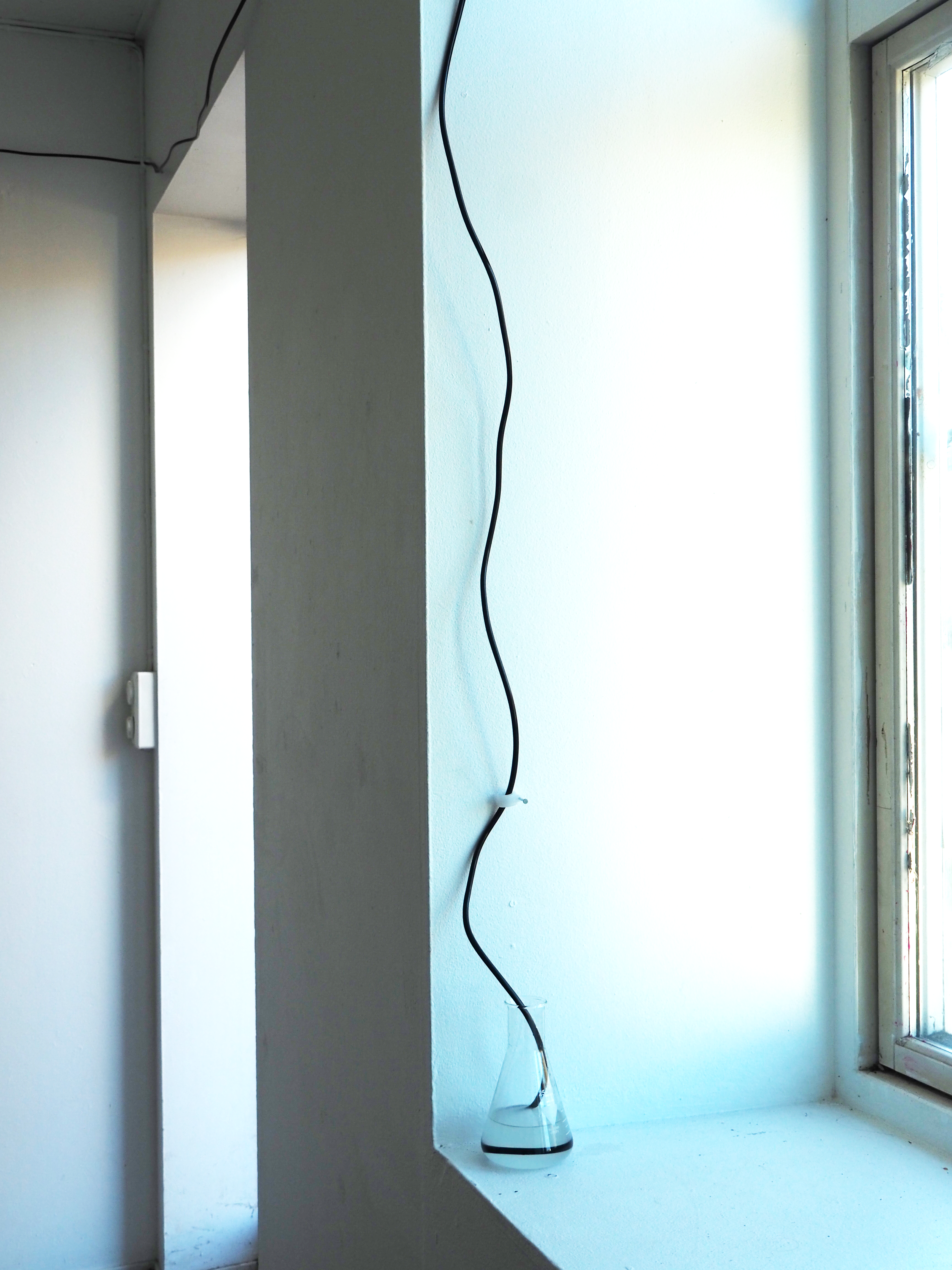
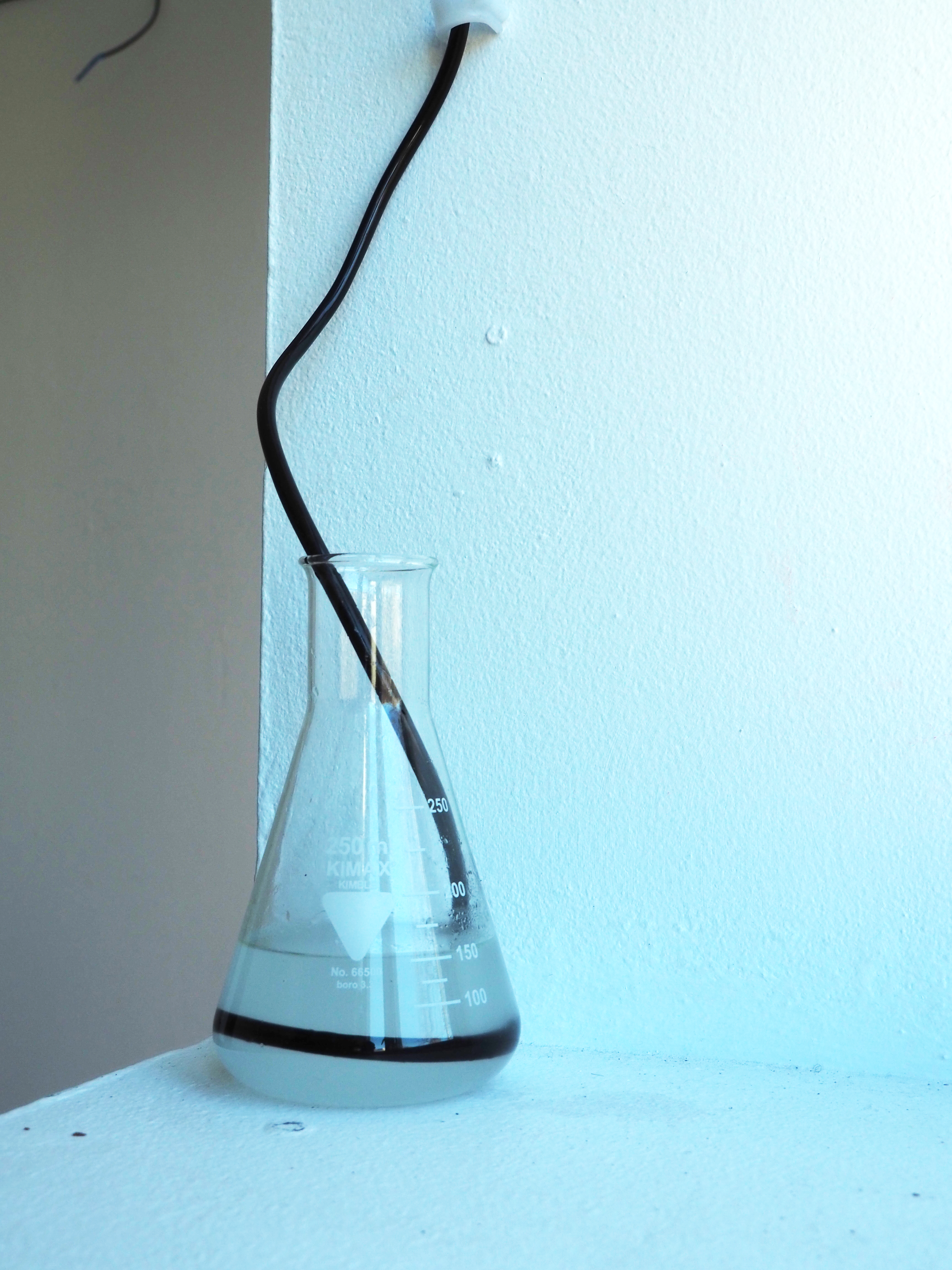


installation view (above)
details (below)
details (below)
Slices of
strata explores the layered nature of remembrance and its evolving
nature in the post-digital space. As time unfolds, memories stack and
become ledged between one another, resulting in ambiguous film-covered
strata that resist delineation. They are fluid and translucent, blending
into an archive of temporal multiplicities.
Memory too undergoes a gradual dissolution, leaving behind sedimented remnants of the past. Parallel to processes of sedimentation, wherein materials are relocated and consolidated over time, memory likewise crystallises through accumulation and solidification. The interplay between various sedimented layers mirrors the complex intermingling of past experiences, present realities, and future aspirations.
The digital sediment, the largest form of sediment we are currently producing, hints
at what archiving has come to be: the transformation of physical sediment into data that can be interpreted (the production of geological evidence without a physical body).
Can our memory also be seen as an artifact? As our virtual identity becomes more and more
solidified; when will our virtual environment also become an archeological site?
Memory too undergoes a gradual dissolution, leaving behind sedimented remnants of the past. Parallel to processes of sedimentation, wherein materials are relocated and consolidated over time, memory likewise crystallises through accumulation and solidification. The interplay between various sedimented layers mirrors the complex intermingling of past experiences, present realities, and future aspirations.
The digital sediment, the largest form of sediment we are currently producing, hints
at what archiving has come to be: the transformation of physical sediment into data that can be interpreted (the production of geological evidence without a physical body).
Can our memory also be seen as an artifact? As our virtual identity becomes more and more
solidified; when will our virtual environment also become an archeological site?


